Enjoy browsing, but unless otherwise noted, these houses are private property and closed to the public.
So don't go tromping around uninvited! CTRL-F to search within the page.
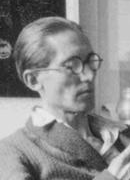
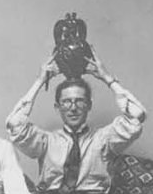
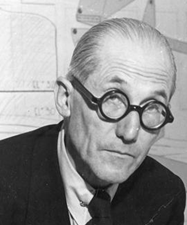
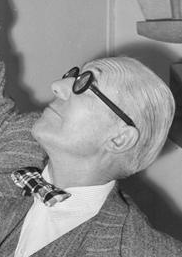
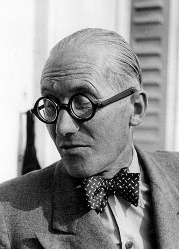
CHARLES-ÉDOUARD JEANNERET
aka Le Corbusier, aka Corbu (1887-1965)
Research underwritten by
DWG Lab, sharing
Le Corbusier's CAD projects for free.
Jeanneret was born in La Chaux-de-Fonds, Switzerland, and began his career after completing education at the advanced course of the Ecole d'Art. Trained as an artist, he travelled extensively through Germany and
the East. In Paris he studied under Auguste Perret and developed a keen interest in the synthesis of the various arts. His first book was Vers une architecture [Towards a New Architecture], based on earlier articles in L'Esprit Nouveau. Jeanneret adopted the name Le Corbusier in the early 1920s. Jeanneret was an architect, designer, urbanist, writer, and painter known for being a pioneer in Modernist architecture. His career spanned five decades with buildings constructed throughout the world. From 1922, Le Corbusier worked with his cousin Pierre Jeanneret. During this time, Le Corbusier's ideas began to take physical form, mainly as houses which he created as "a machine for living" which incorporated his trademark five points of architecture:
1. Ground-level supports elevating the building from the ground and allowing an extended continuity of the garden beneath.
2. Functional roof, serving as a garden and terrace, reclaiming for nature the land occupied by the building.
3. Free floor plan, relieved of load-bearing walls, allowing walls to be placed freely and only where aesthetically needed.
4. Long horizontal windows, providing illumination and ventilation.
5. Freely-designed facades, serving as only as a skin of the wall and windows and unconstrained by load-bearing considerations.
He became a French citizen in 1930. In 1947, he started his Unite d'habitation series. Although relieved with sculptural roof-lines and highly colored walls, these massive post-war dwelling blocks received justifiable criticism. People just didn't get it, and their lives never transformed as he hoped. Yet, his dedication to providing better living conditions for residents of crowded cities was undeterred. Corbusier was part of the architect team that designed the UN Headquarters in New York. He died of a heart attack while swimming in the sea off Cap Martin in 1965. He was buried alongside his wife in the grave he had designated at Robuebrune. He wrote some forty books and left the world about 32,000 architectural drawings and plans. Bio adapted from Wikipedia and Great Buildings Online.
Interview by
John
Peter
Quotes by Corbusier:
"A house is a machine for living."
"Architecture is the learned game, correct and magnificent, of forms assembled in the light."
"Space and light and order. Those are the things that men need just as much as they need bread or a place to sleep."
"I prefer drawing to talking. Drawing is faster, and leaves less room for lies."
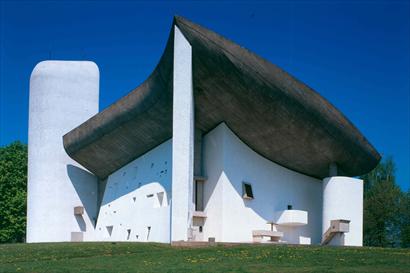
Chapelle Notre Dame du Haut, aka Ronchamp, photo above, completed in 1954, is one of the
world's most important examples of Modernist religious architecture.
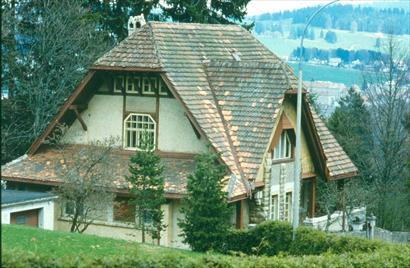
1906 - The Louis-Edouard Fallet House, aka Villa Fallet, 2300 La Chaux-de-Fonds, Switzerland. Designed with Rene Chapallaz and other students at the Ecole d'Art, although the primary design is attributed to Corbu. The family was so pleased they led to two more commissions.
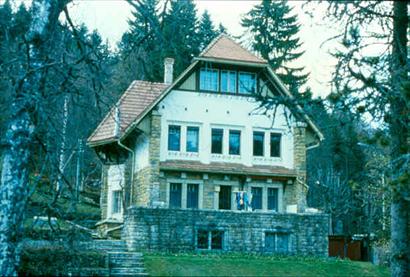
1907 - The Ulysses Jules Jaquemet Villa, aka Villa Jaquemet, 8 Chemin de Pouillerel, La Chaux-de-Fonds, Switzerland. Designed with Rene Chapallaz.
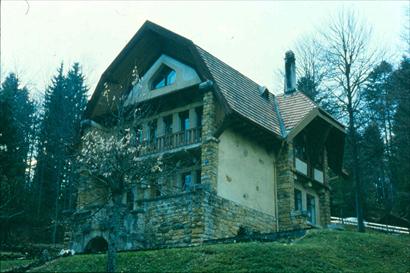
1907 - The Albert Stotzer Villa, aka Vills Stotzer, 6 Chemin de Pouillerel, La Chaux-de-Fonds, Switzerland. Designed with Rene Chapallaz.
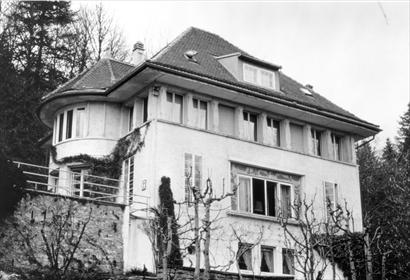
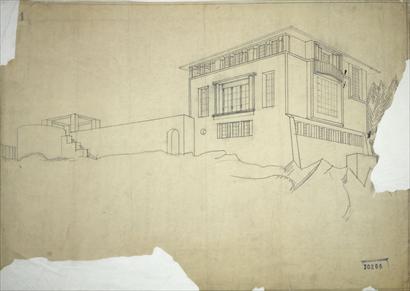
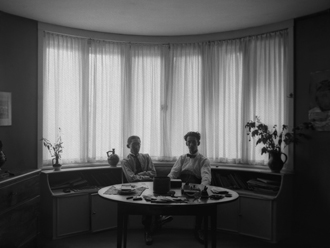
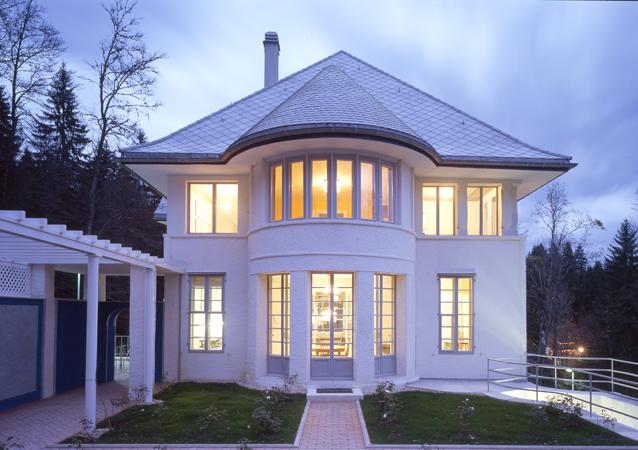
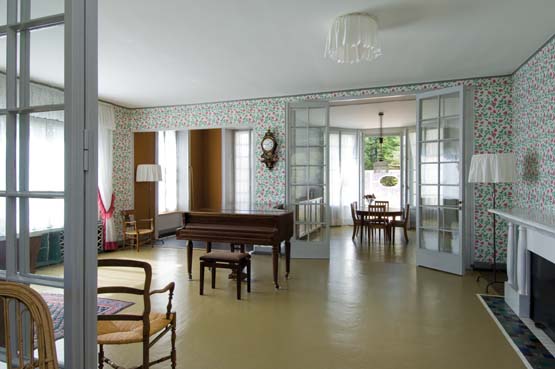
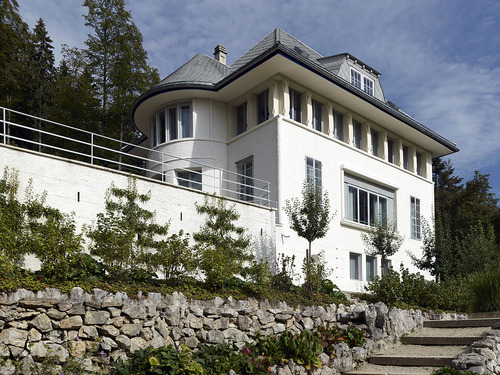
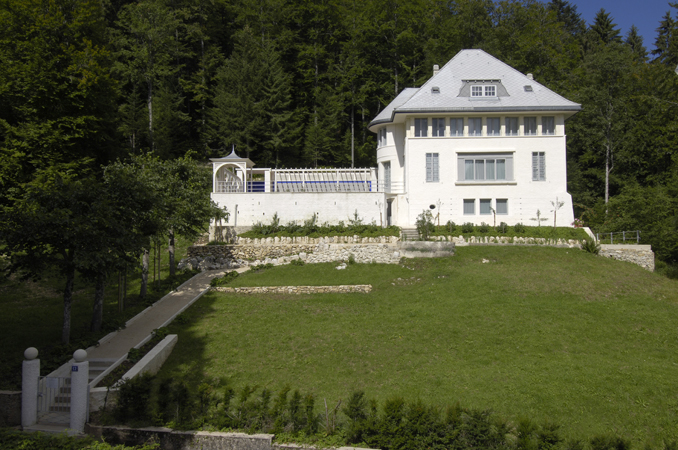
1912 - Villa Jeanneret-Perret, aka Maison Blanche, aka the White House, 12 Chemin de Pouillerel, La Chaux-de-Fonds, Switzerland. Maison Blanche, designed for his parents, was his first independent project. Surprisingly, the young architect actually charged his parents a fee for designing their home (although it was certainly less than what he would have charged other clients). He lived and worked in the house from 1912 to 1915. In 1919, the house was sold at a loss and had many owners until 2000, when the Association Maison Blanche bought and renovated it. Open for tours since 2005.
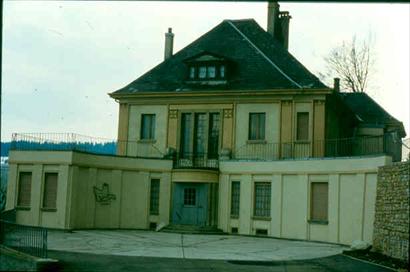
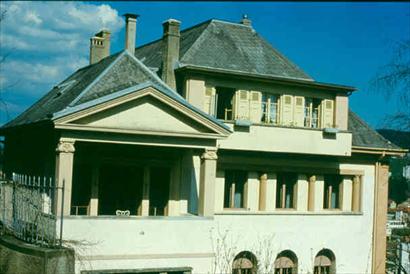
1913 - Villa Georges Favre-Jacot, 6 Cotes des Billodes, Le Locie, Switzerland. Commissioned 1912.
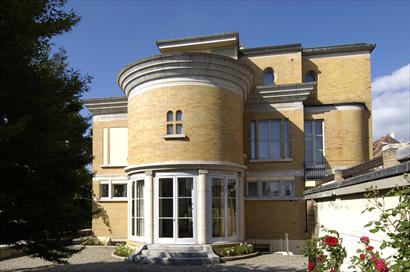
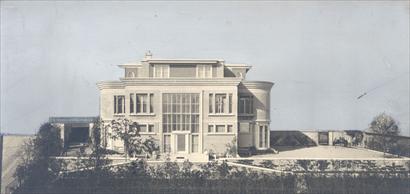
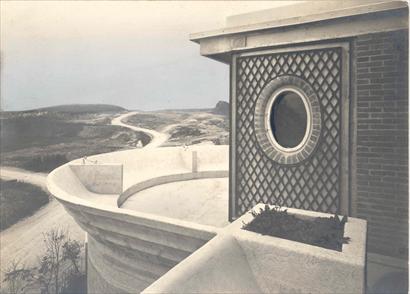
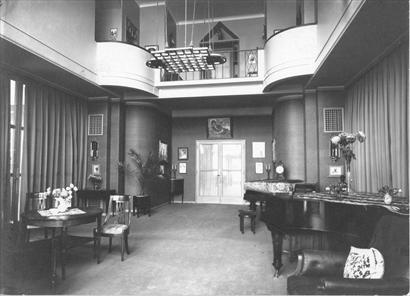
1917 - Villa Anatole Schwob, 167 rue du Doubs, La Chaux-de-Fonds, Switzerland. Commissioned in 1916.
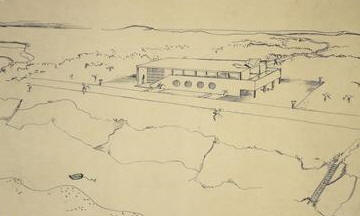
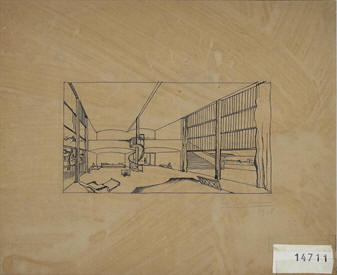
1917 - Villa Paul Poiret. Unbuilt.

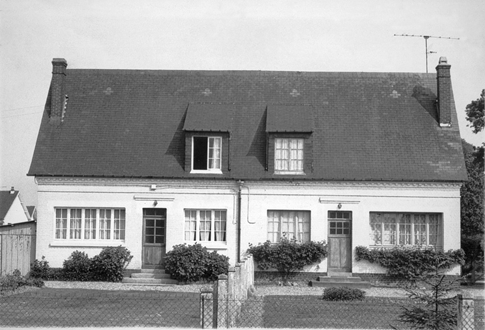
1918 - Cite Ouvriere, Rue Raphael Hennion, Satin Nicholas d'Alierment, Seine Maritine, France. Intended plan of 46 dwellings of 3 types of double houses. Only one of the smallest type "C" houses was built, a one and a half story building that contains 2 identical dwellings, each with gabled roof and dormers. Half of the double house maintains its original exterior and is visible from the street.
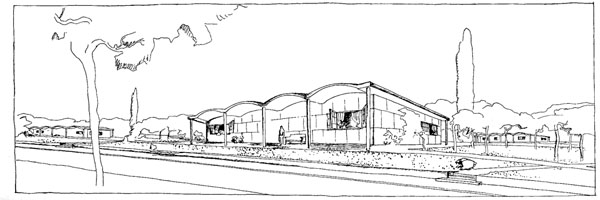
1919 - Maison Monol. Unbuilt.
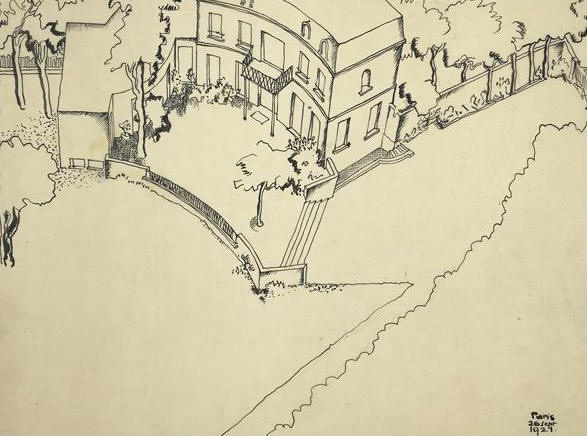
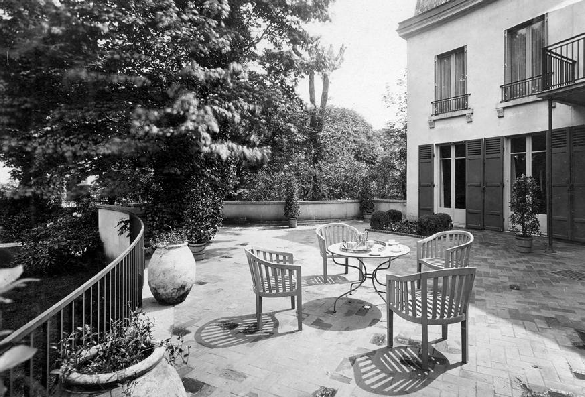
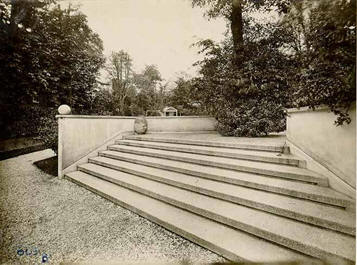
1922 - Villa Berque, 10 Rue Poussin, Paris. Commissioned 1921. Partially built at the time, finished later.
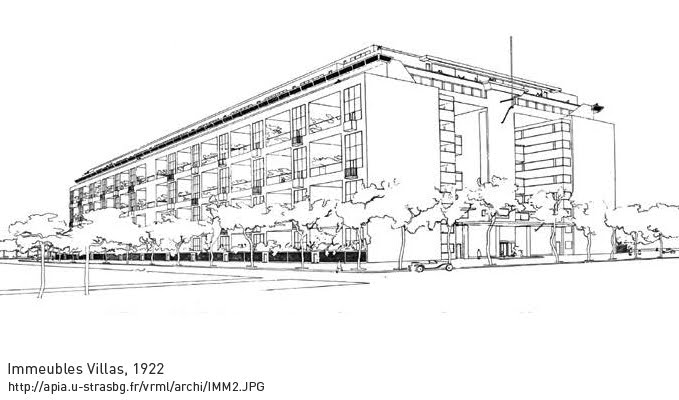
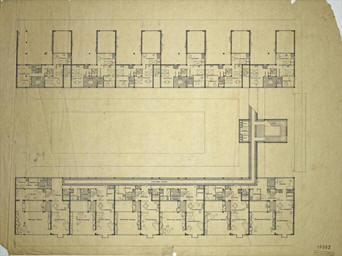
1925: The Immeubles Villas Apartments. Concept of multi-family housing developed for the Esprit-Nouveau Pavilion at the International Exhibition of Decorative Arts in 1925. Unbuilt. It is one the first prototypes of Cité Radieuse.
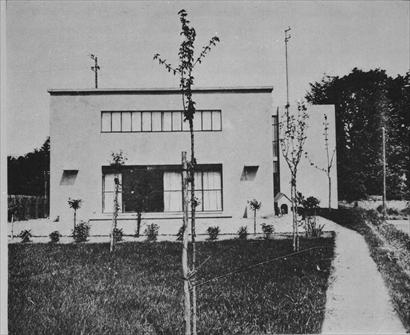
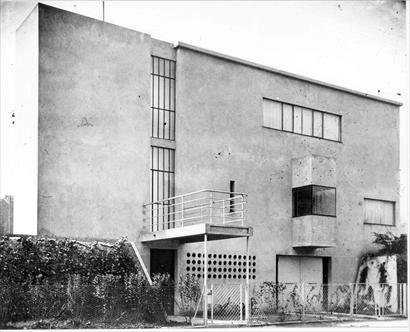
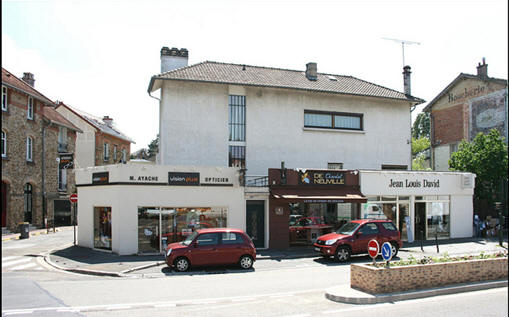
1923 - aka Villa Besnus (aka Ker-Ka-Ré), 85 Boulevard de la Repubique, Vaucresson, Paris, France. Commissioned 1922. Villa completely altered over the years: four sloping ceilings, addition of shops on the ground floor.
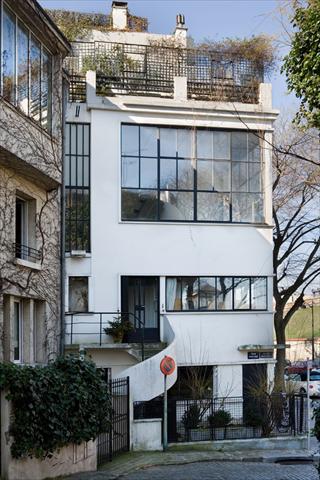
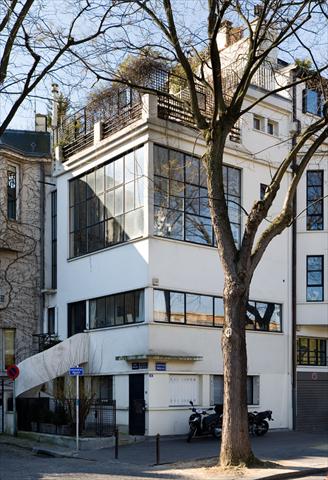
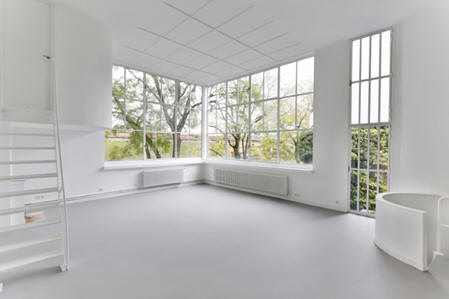
1924 - The Amédée Ozenfant House and Studio, 53 Avenue Reille, Vaucresson, Paris. Commissioned 1922. Significantly altered.
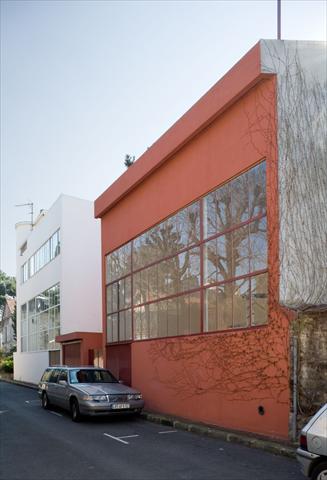
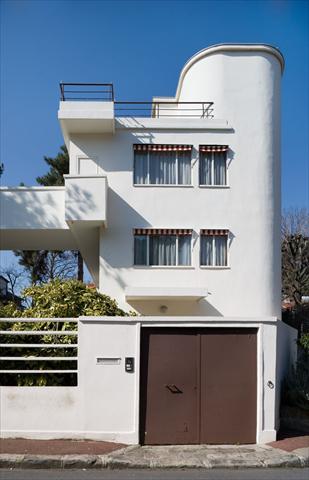
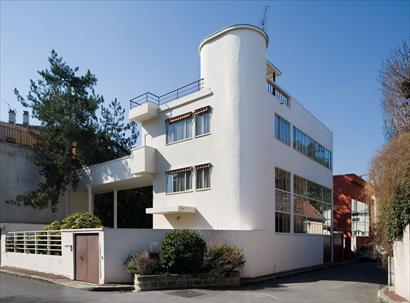


1925 - Villas Jacques Lipchitz-Oscan Miestchaninoff, 9 allee des Pins, 7 rue de Arts, Boulogne-sur-Seine, France. Commissioned 1923. The original plan was for an artist colony of three residences. For sale in 2024.

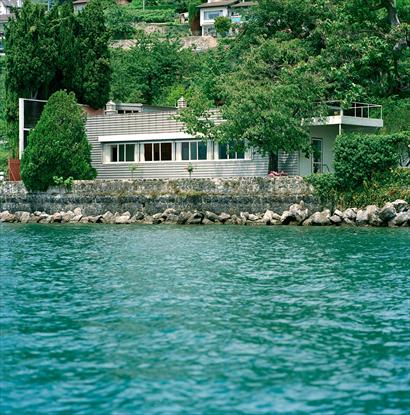
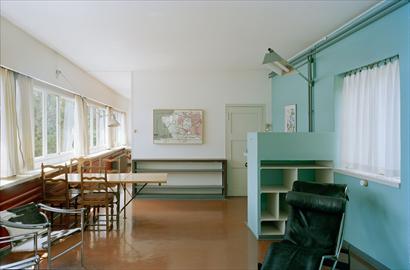
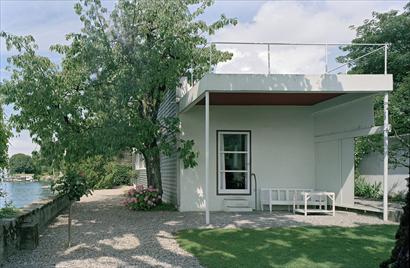
1924 - Villa Le Lac, aka Petite Maison, Corseaux, on Lake Geneva, Switzerland. Commissioned 1923. A holiday home for his parents. Featured in the 1931 MOMA Exhibition curated by Philip Johnson.
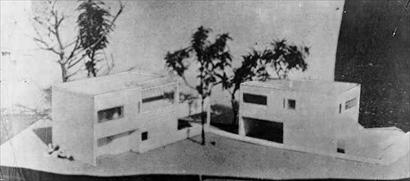
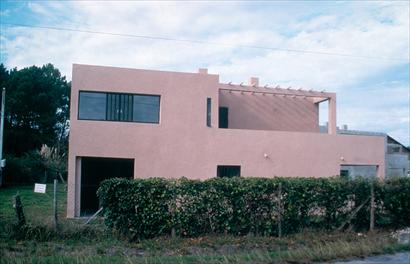
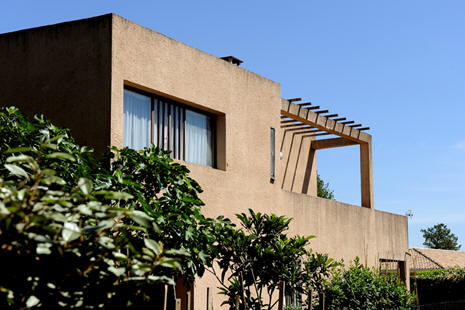
1924 - House and canteen, Lège, France.
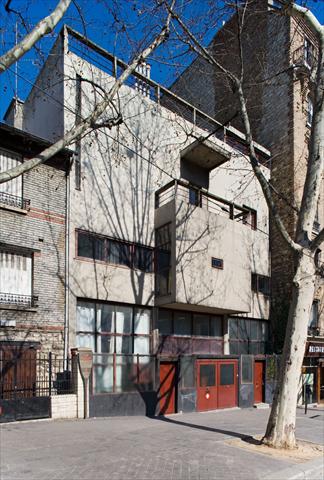
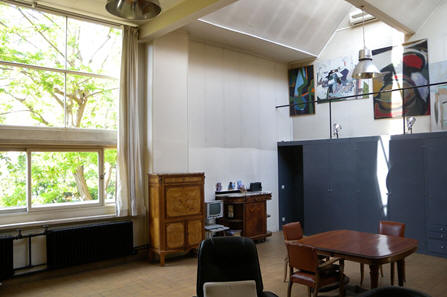
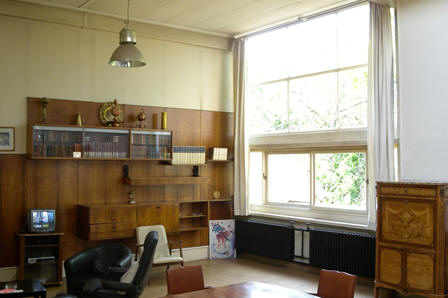
1924 - Maison Planeix, 24 Boulevard Masséna, Paris, France.
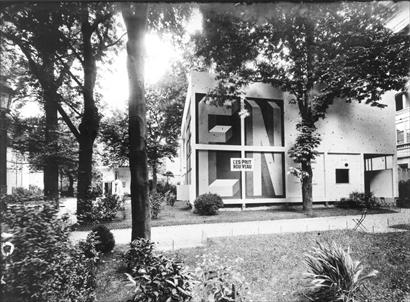
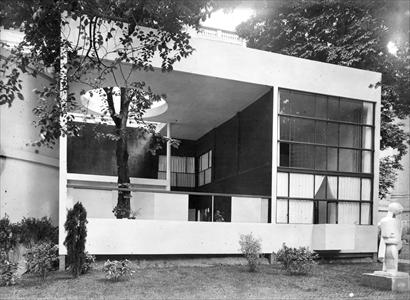
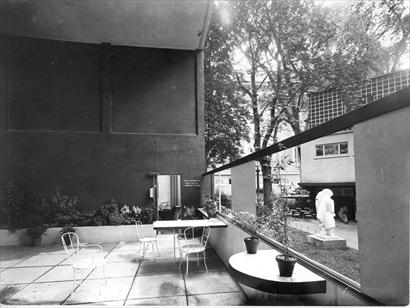
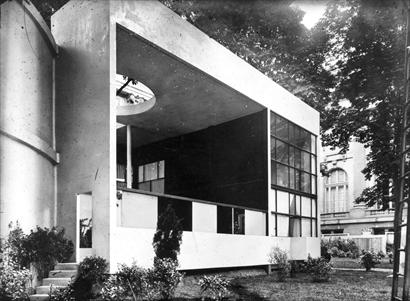
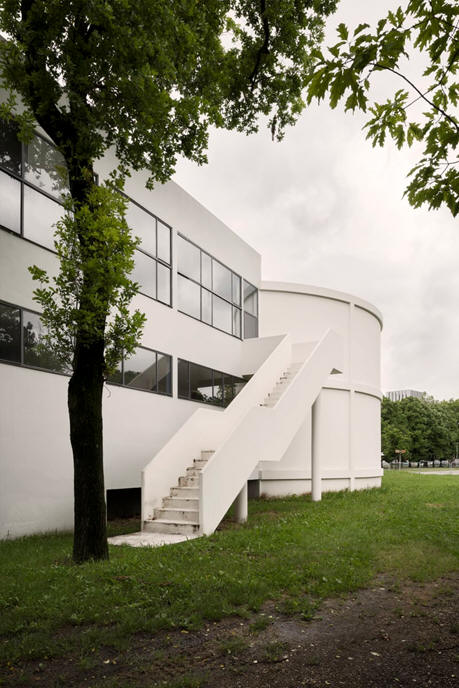
1924 - Pavillon de L'Esprit Nouveau for the 1925 Exposition Internationale des Arts Décoratifs et Industriels Modernes, Paris, France. Destroyed in 1926. Le Corbusier's ideas were considered to be too avant- garde for the times. In 1977, an exact replica was built in Bologna, Italy, by architects Jose Oubrerie and Giuliano Gresleri.
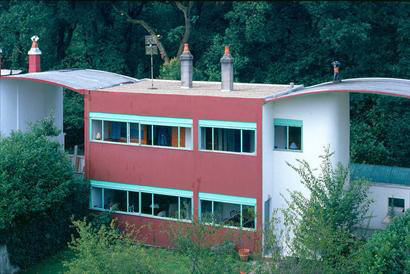
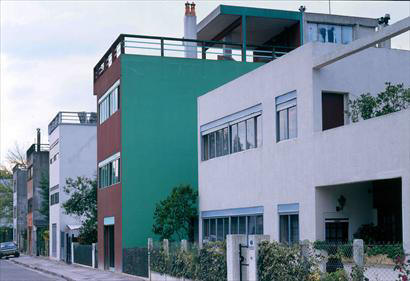
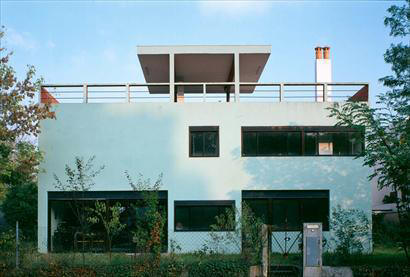
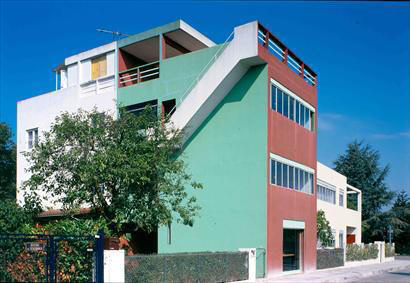
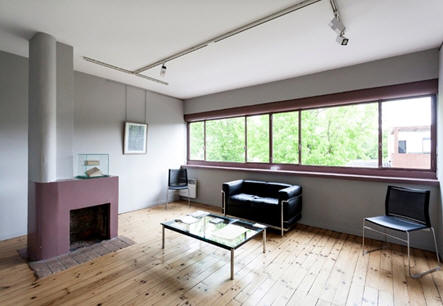
1926 - Worker housing, aka Quartiers Modernes Frugès, located on Rue le Corbusier, Rue Henri Fruges, and Rue des arcades, Pessac, France. Commissioned 1924. About 50 houses. Many were altered and some destroyed during WWII. The complex was named a UNESCO World Heritage Site in 2016.
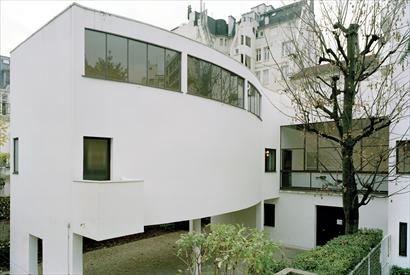
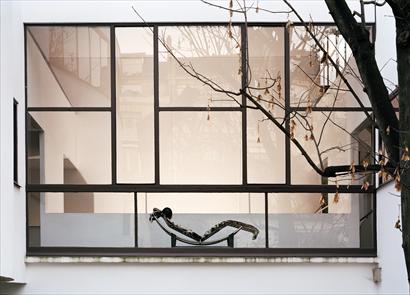
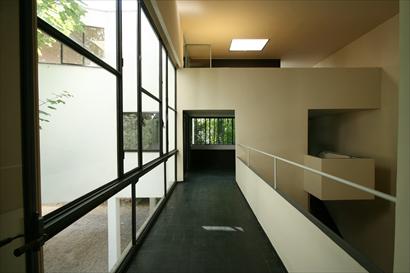
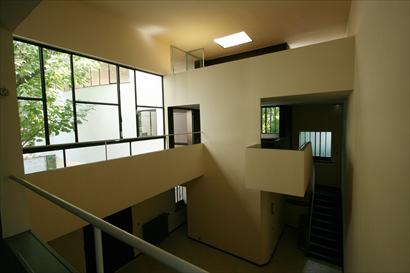
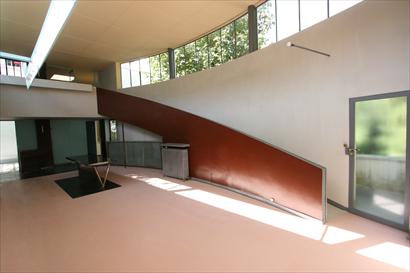
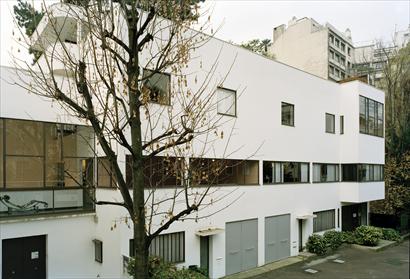
1925 - Villa La Roche and Villa Jeanneret, 8-10 Square du Docteur-Blanche, XVIe arrondissement, Paris, France. Commissioned 1923. Villa Jeanneret and Villa La Roche are two houses in Paris, designed by Le Corbusier and Pierre Jeanneret and renovated by Charlotte Perriand in 1928. The Villa Jeanneret was commissioned by Le Corbusier's brother, Albert Jeanneret, and his fiancée Lotti Raaf. It forms part of a joint project with the connected Villa La Roche - the original scheme involved more houses and more clients, but it was only Jeanneret and La Roche that stayed the course and saw their villas built. No longer inhabited, they now house the Foundation Le Corbusier Museum and archives.

1925 - Villa Meyer. Unbuilt.
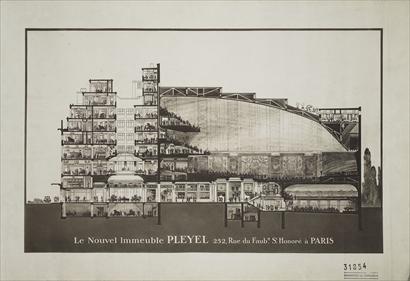
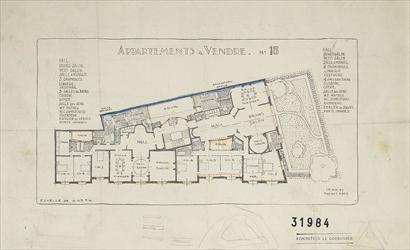
1925 - Student housing in Paris. Unbuilt
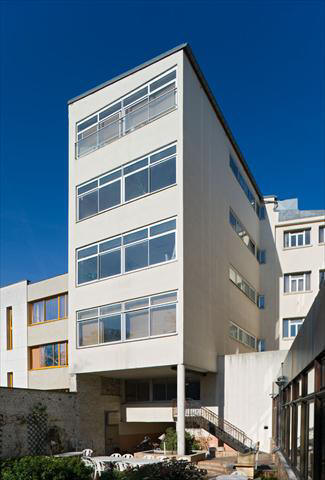
1926 - Armée du Salut, Palais du Peuple, Paris, France.
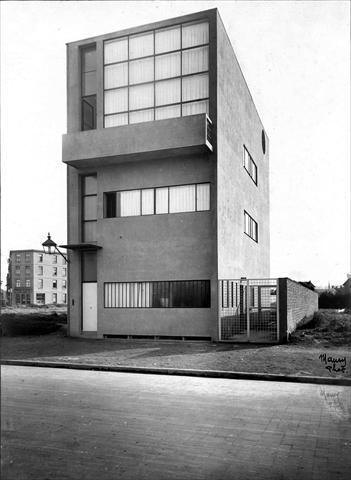
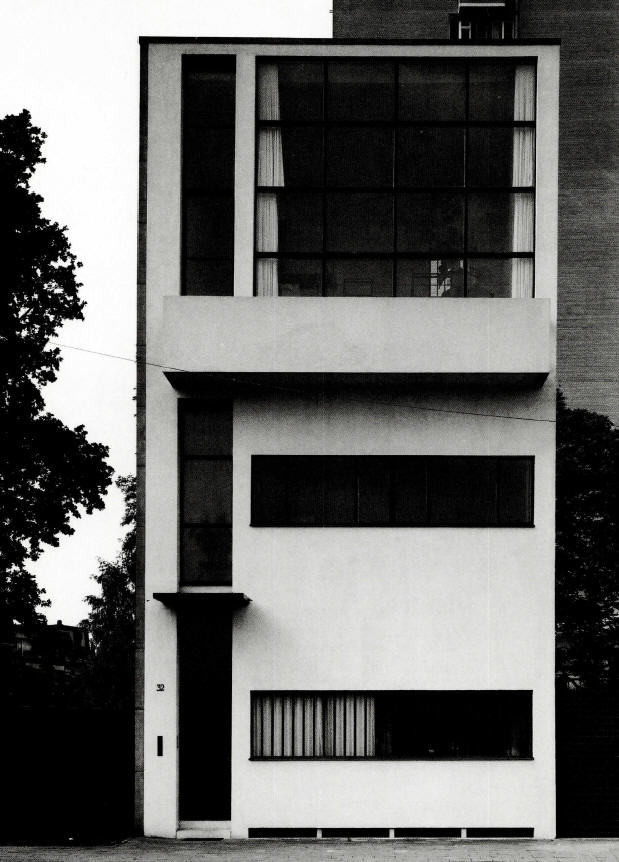
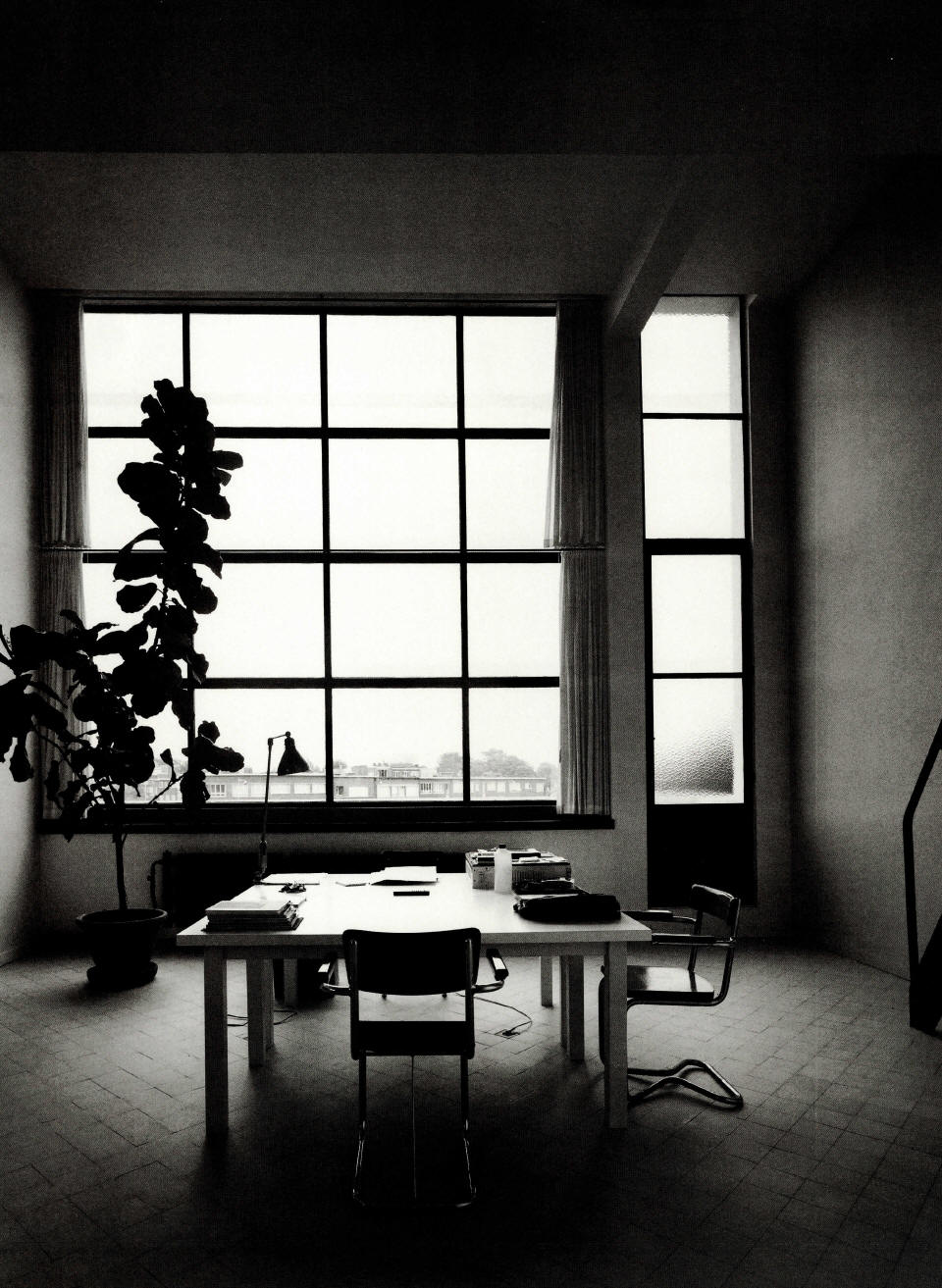
1926 - The Guiette House, aka Maison Guiette, Antwerp, Belgium. Restoration by George Baines. Featured in GA Houses 38.
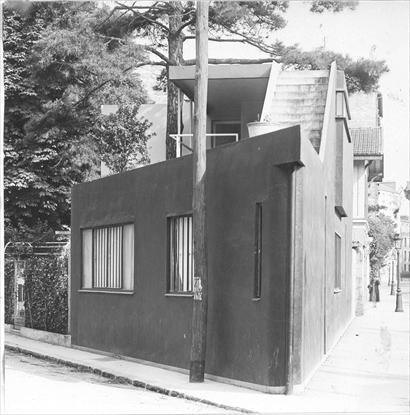
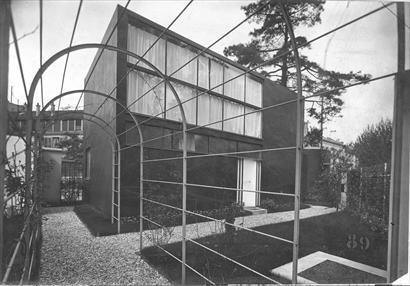
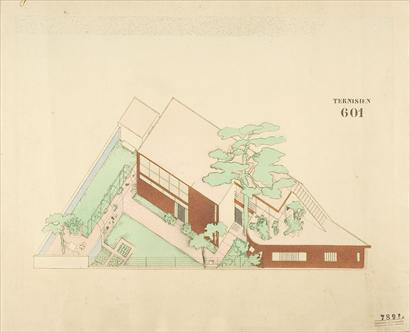
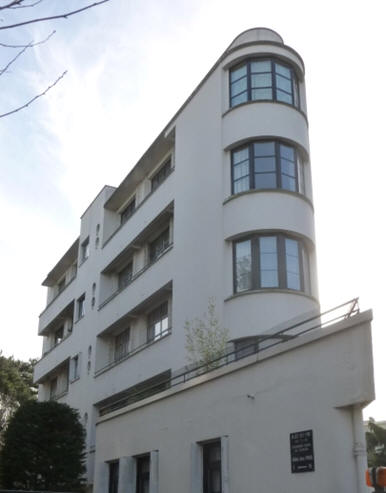
1926 - Villa Ternisien, 5 Allée des Pins, Boulogne-sur-Seine, Paris. Almost completely destroyed. A building by G.H. Pingusson was built on top of Le Corbusier's original structure, only the original tip remains.
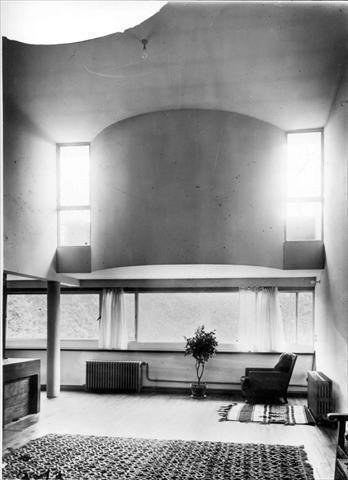
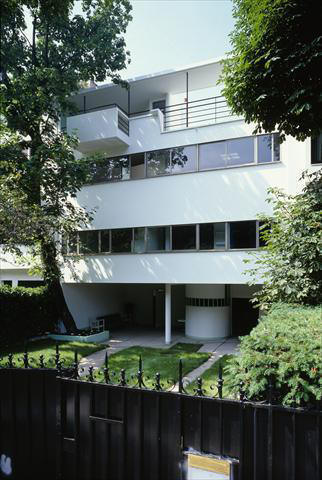
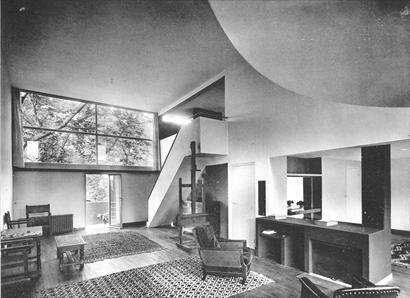
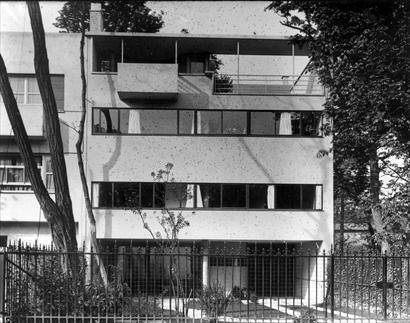
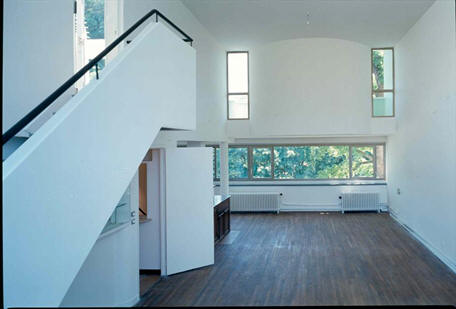
1927 - Villa Cook, 6 Rue Denfert Rochereau, Boulogne-Billancourt, France. Commissioned 1926.
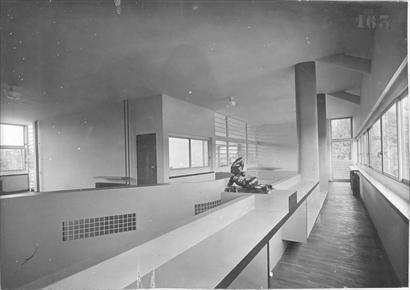
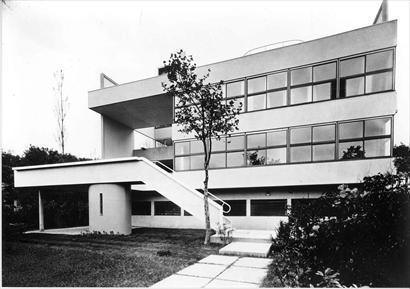
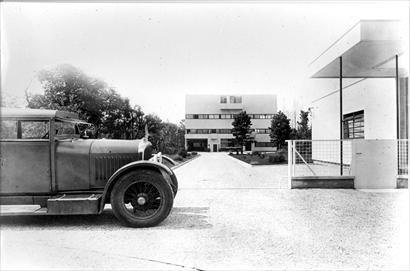
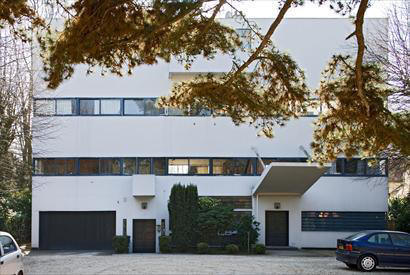
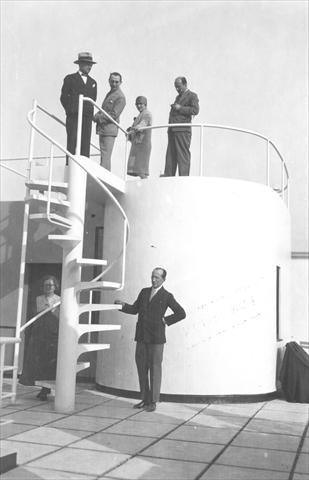
1928 - The Villa M. de Monzie House, aka Villa Stein, aka Villa Garches, aka Villa de Monzie, aka Villa Stein-de Monzie, 17 Rue de professeur Victor Pauchet, Garches, Paris, France. Commissioned 1926. Sold to Gertrude Stein.
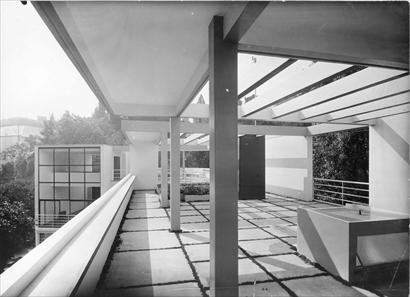
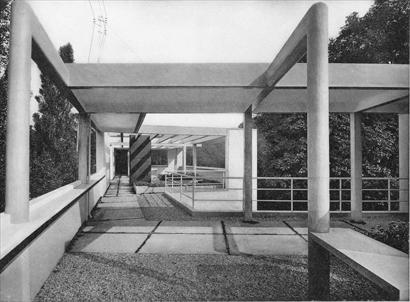
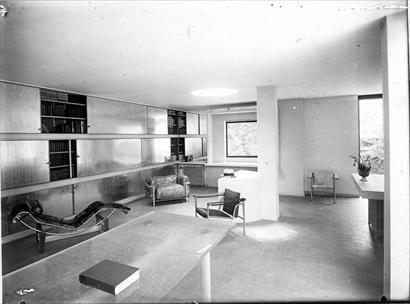
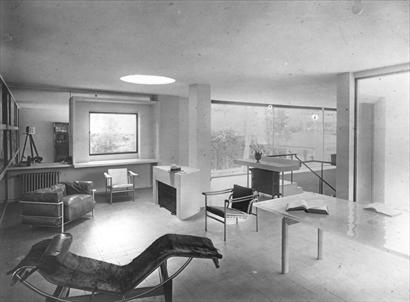
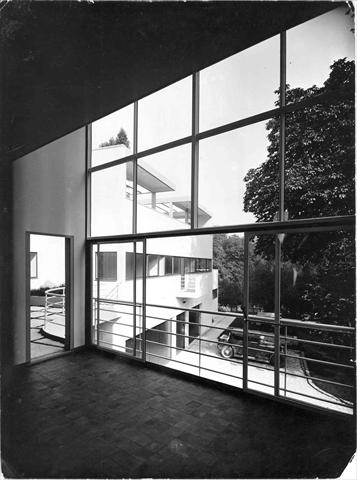
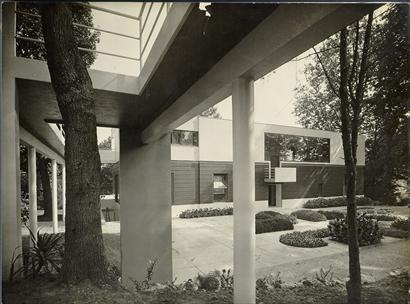
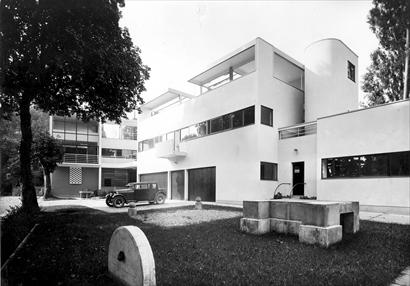
1927 - Villa Church, aka Church House, Ville-d'Avray, France. Building destroyed in 1963.
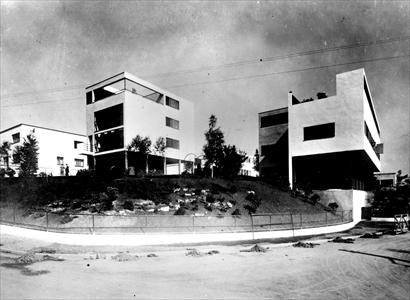
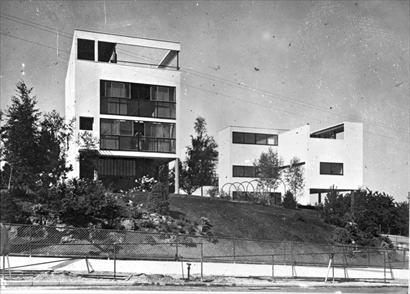
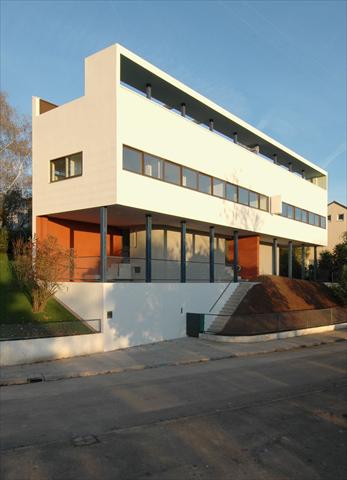
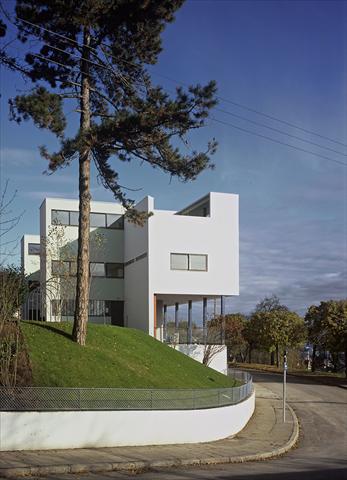
1927 - Villas at Weissenhof Estate, Am Wiessenhof 30, 70191 Stuttgart, Germany.
Adapted from Wikipedia: This was a showcase of what later became known as the International style of modern architecture. The estate was built for the Deutscher Werkbund exhibition of 1927 and included 21 buildings comprising sixty dwellings, designed by seventeen European architects. Mies van der Rohe was in charge of the project on behalf of the city, and it was he who selected the architects, budgeted and coordinated their entries, prepared the site, and oversaw construction. Le Corbusier was awarded the two prime sites, facing the city, and by far the largest budget. All but two of the entries were white. Bruno Taut's entry was the smallest, painted a bright red.
Advertised as a prototype of worker housing, each of these houses was highly customized and furnished on a budget far out of a normal workers reach, and with little direct relevance to the technical challenges of standardized mass construction. The exhibition opened to the public on July 23, 1927, a year late, and drew large crowds. Of the original twenty-one buildings, eleven survived as of 2006.
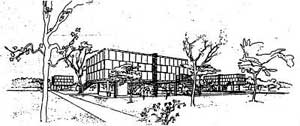
1928 - Maisons Loucheur, unbuilt. Commissioned 1928. It was Le Corbusier's his response to the Loi Loucheur, a government program under which a total of 200,000 dwellings for sale and 60,000 for rent were to be built within 5 years (a number well below the 1 million dwellings needed). These featured moveable and fold down furniture to make the best use of a small area through the course of the day.
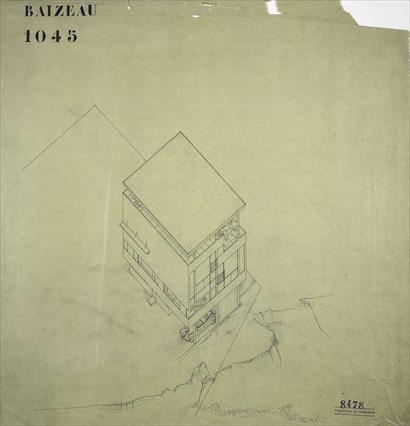
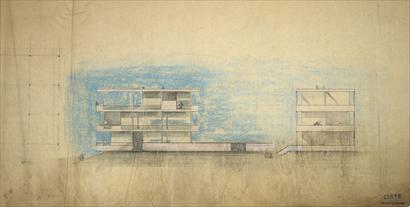
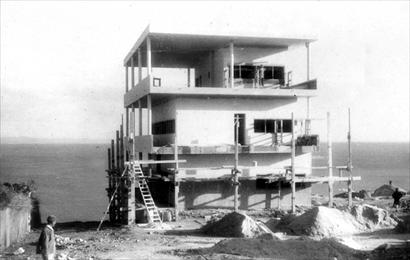
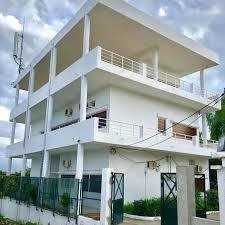
1929 - Villa Baizeau, St Monique, Carthage, Tunisia. Commissioned 1928. Still a private house, but unaltered as of 2000.
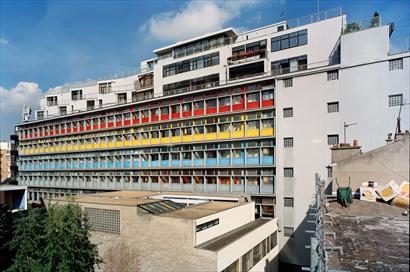
1929 - Cité du Refuge, 12 Rue Cantagrel, 75013 Paris, France.
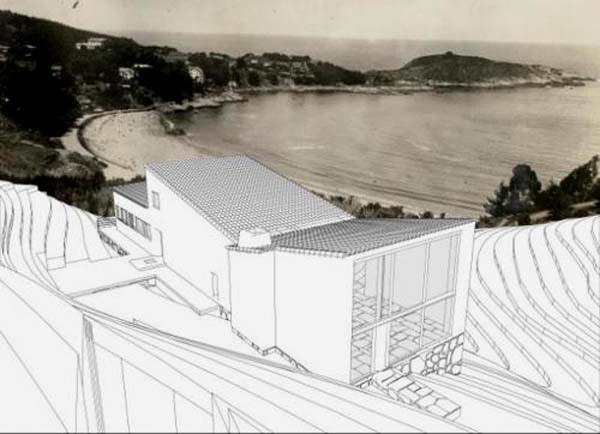
1930 - Maison Eugenia Errazuriz, Zapallar, Chile. Unbuilt. Le Corbusier's first attempt at the butterfly roof for an heiress to a Bolivian silver mining fortune and wife of Jose Tomas Errazuriz, whose father and grandfather had both been President of Chile. Eugenia was a grand patroness of the avant-garde; in addition to the modern cliff-side summer home she commissioned, Eugenia was a friend to and avid collector of Picasso. Maison Errazuriz, was set to overlook the Pacific Ocean. Eugenia Errazuriz's lifestyle and patronage of the arts left her bankrupt (even after she sold several of Picasso's works back to him) the year before construction was supposed to start.
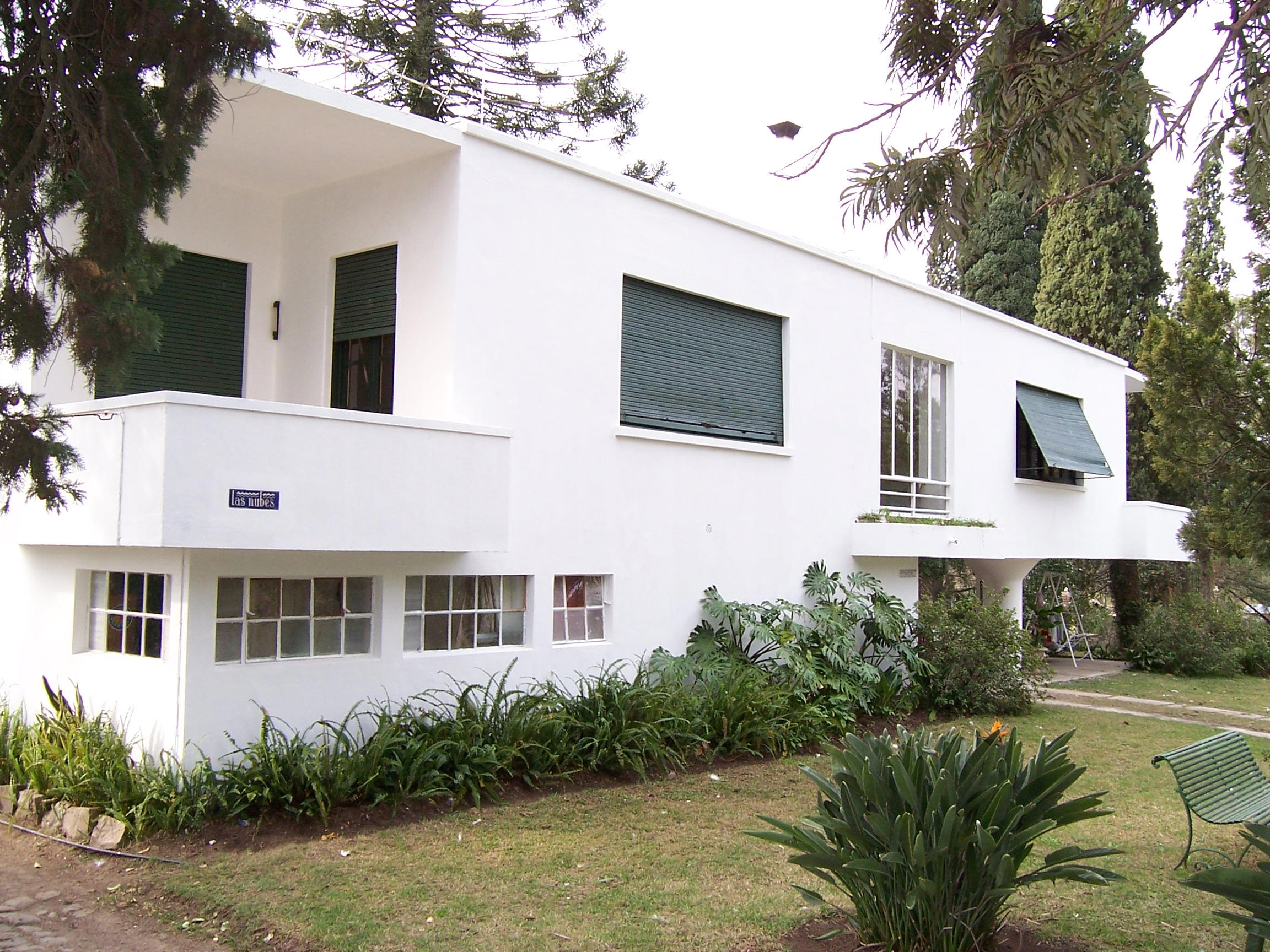
1930 - The Enrique Amorim House, aka Las Nubes, Salto, Uruguay. Often attributed to Corbusier but the actual architect was the owner, who met and was inspired by Corbusier on a trip to Europe.
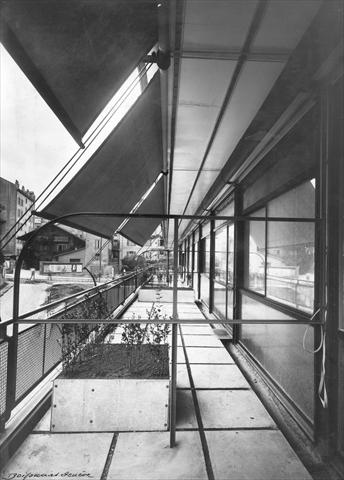
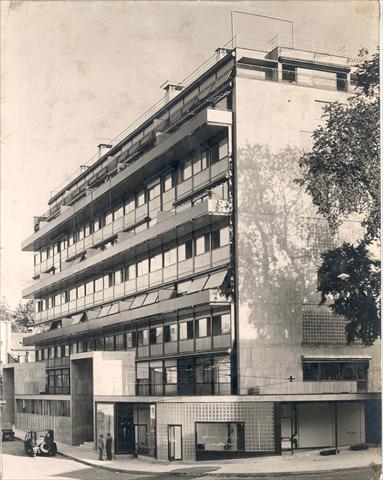
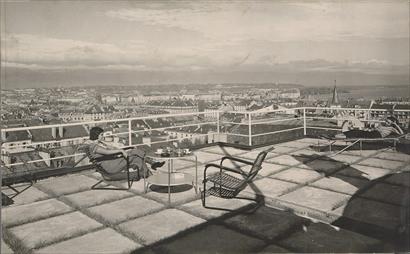
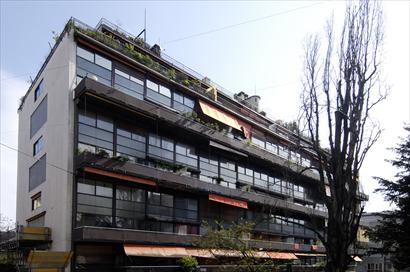
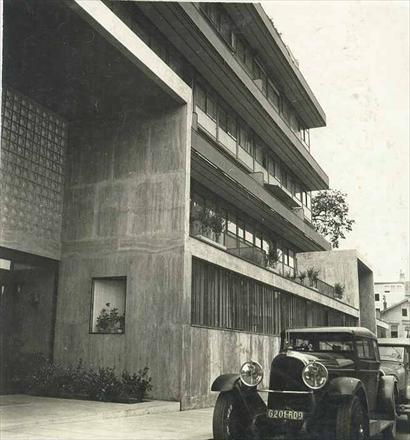
1930 - The Clarity Building, aka Immeuble Clarte, Rue Saint-Laurent 2, Geneva, Switzerland.
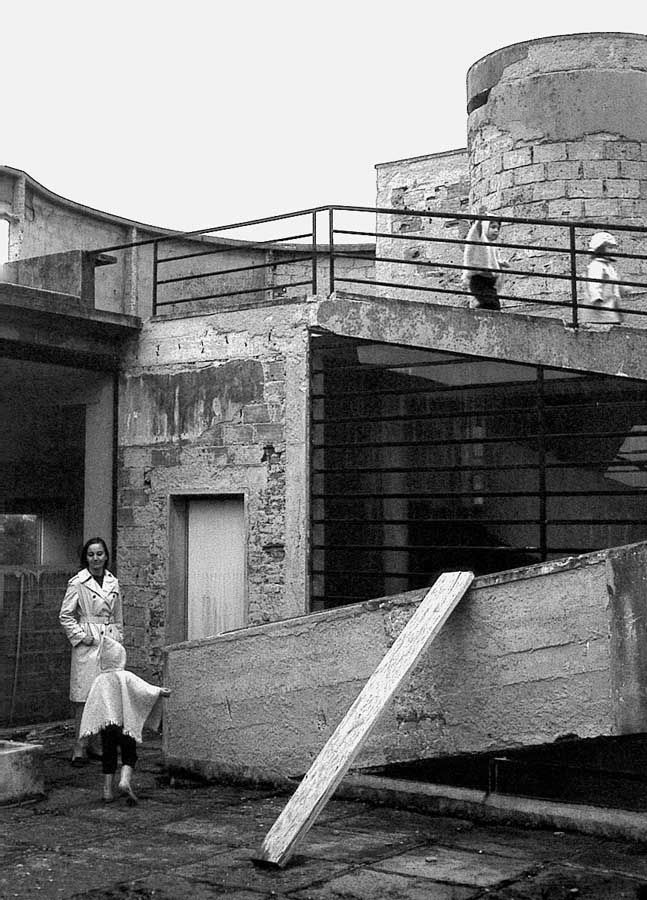
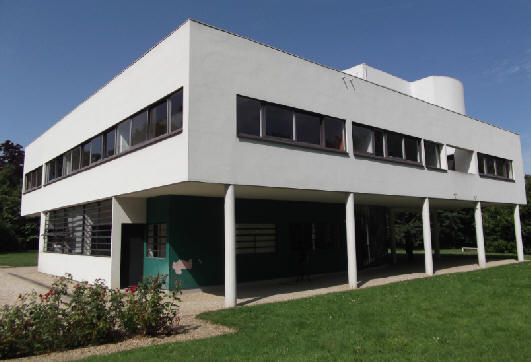
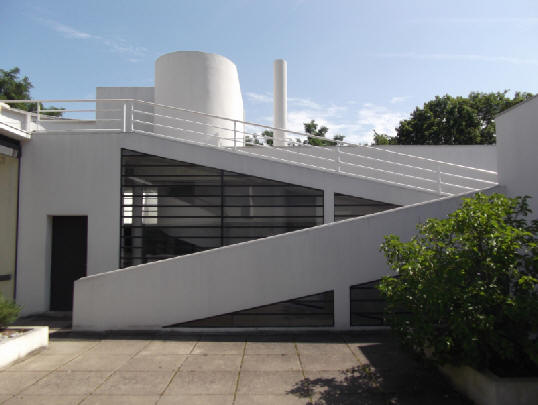
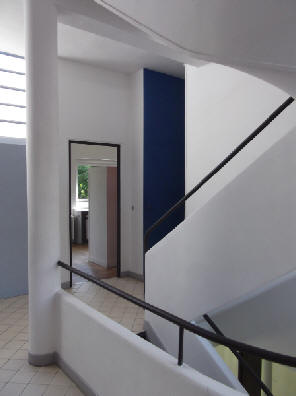
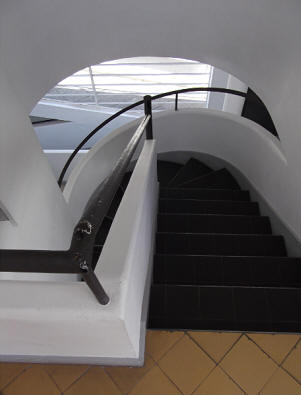
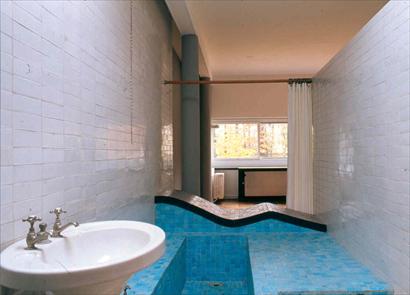
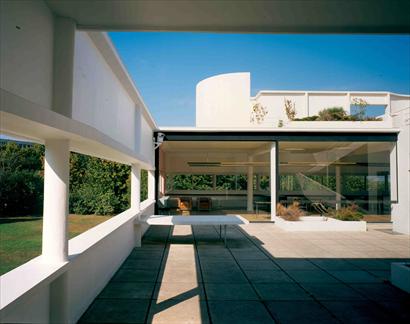
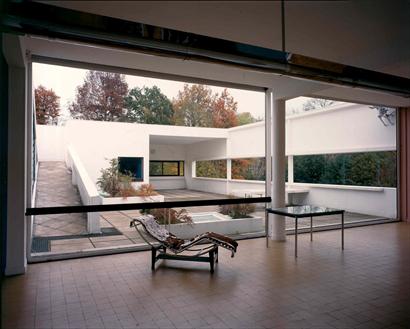
1931 - Villa Pierre & Emilie Savoye, 82 Rue de Villiers, Poissy, France. Designed with Pierre Jeanneret. Commissioned 1928.
As the owners were a prominent Jewish family, they abandoned the home at the beginning of WWII. The flat roof and interior fittings inside the concrete façade resulted in significant leakage almost immediately following the building's completion and the owner threatened a lawsuit which was never carried out due to the outbreak of war. It was then occupied first by the Nazis and later by the Allied Forces. It was purchased by the town of Poissy in 1958 and was scheduled to be destroyed. Le Corbusier sparked an international campaign and the action was halted.
The home was given to France in 1962, damaged following its occupation in WWII (top photo). It underwent several renovations between 1963 and 1997. As of 2012, under the care of the Centre des Monuments Nationaux, the refurbished house is now open to visitors.
The Villa was listed as a French national historical monument in 1958 (rare, due to the fact that Le Corbusier was still living at the time). Lego included it in their Classic Architectural Series in 2012. This is one of Corbusier's best-known houses. It has had enormous influence on international modernism.
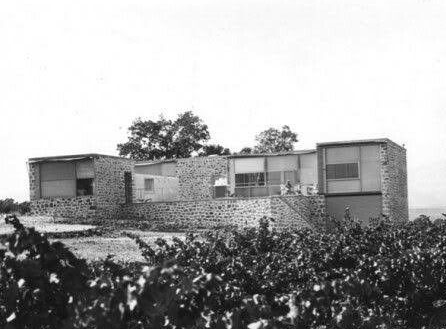
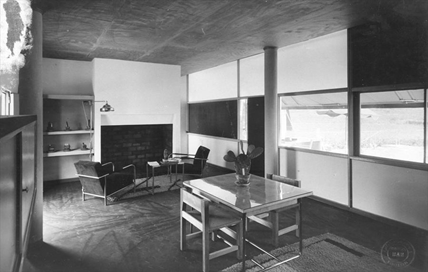
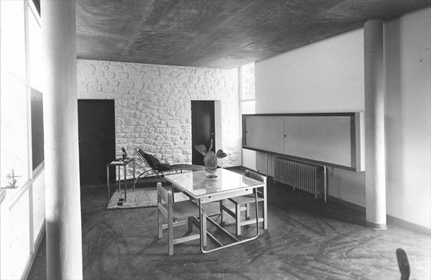
1931 - Villa de Madame H. de Mandrot, Roule de l'Artaude, Le Pradet, France. Commissioned 1929.
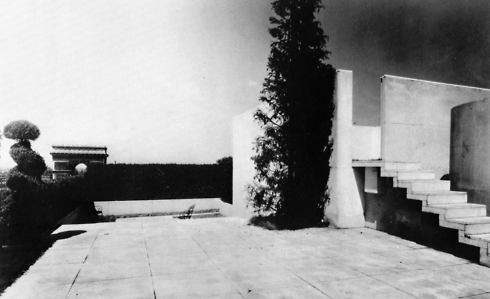
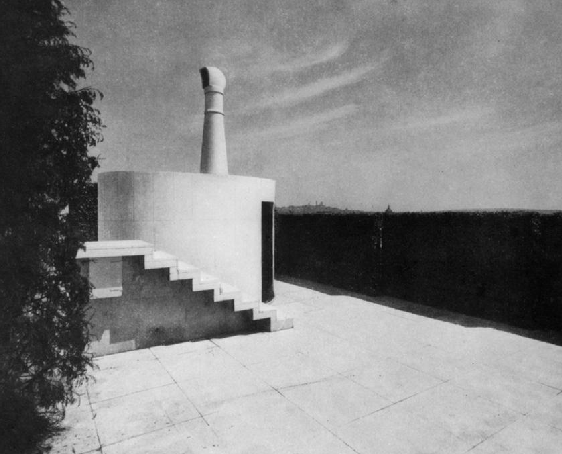
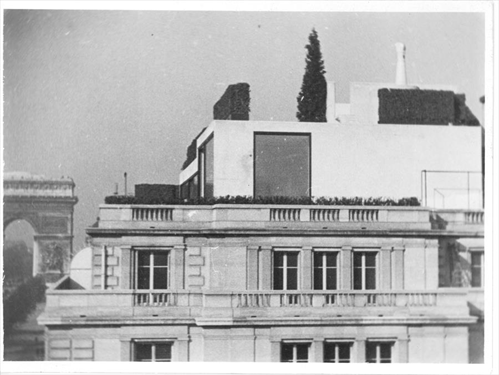
1931 - Penthouse de Beistegui, Champs-Elysees, Paris, France. Commissioned 1929. Apartment unfortunately renovated away from Corbusier.
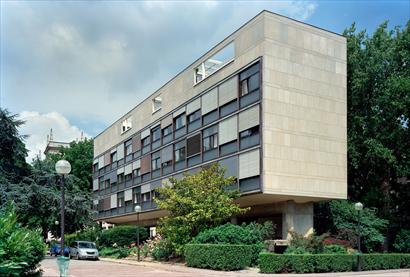
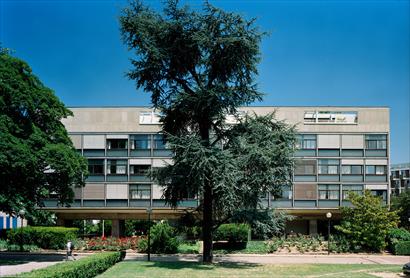
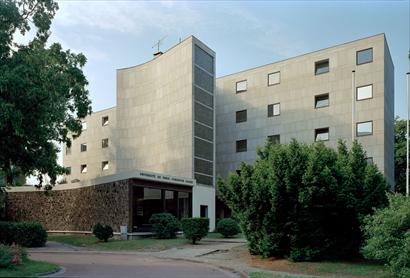
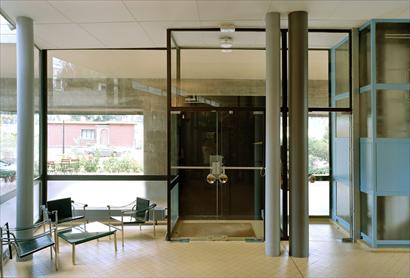
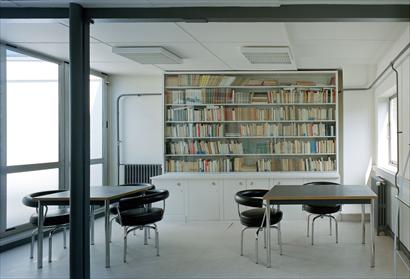
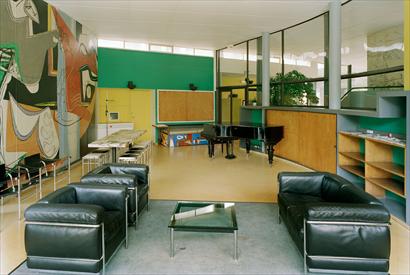
1932 - The Pavillon Suisse (aka the Swiss Pavilion), 7 Boulevard Jourdan, Cité Universitaire, Paris. Commissioned 1929. The complex is still used by the Fondation Suisse and is a public, residential, research, and gallery space. Classified in 1986 as historic monument. 46 rooms with a small kitchen and 2 toilets on each of the three main floors.
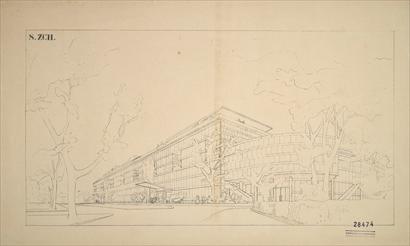
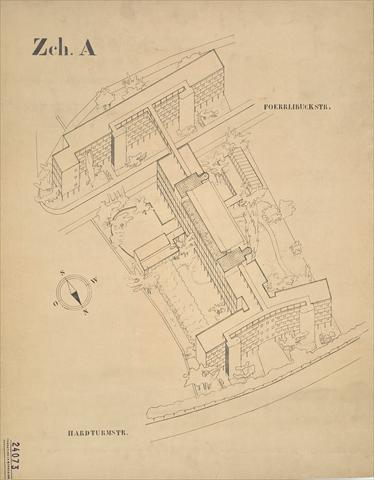
1933 - Two apartment complexes in Zurich, Switzerland. 80 units, unbuilt. Included two interior streets and external soundproofing. Commissioned 1932.
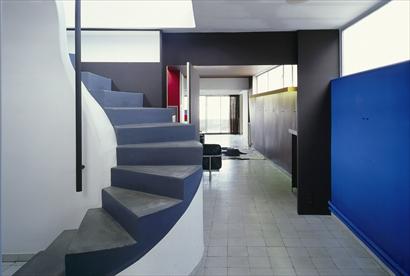
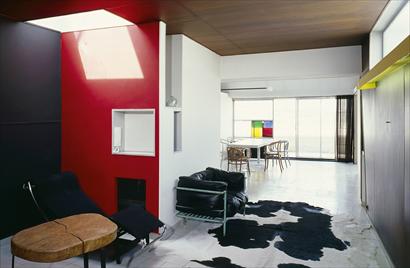
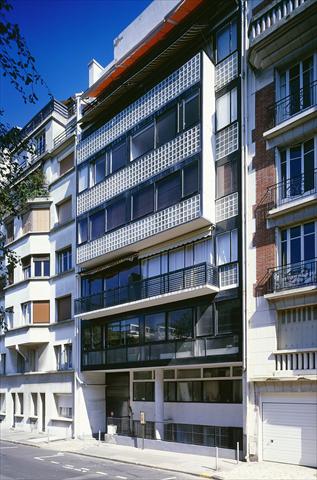
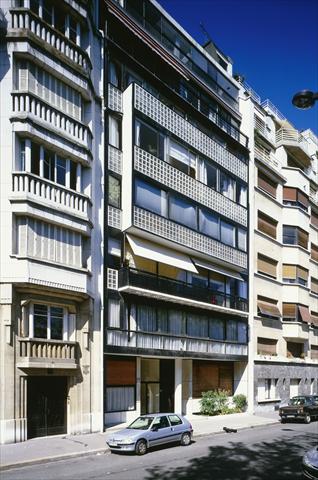
1934 - The Molitor Building, 24 Rue Nungesser et Coli, 92100 Boulogne-Billancourt, France. Commissioned 1931.
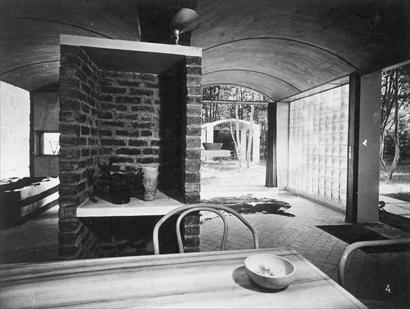
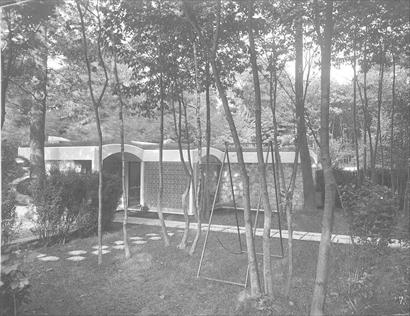
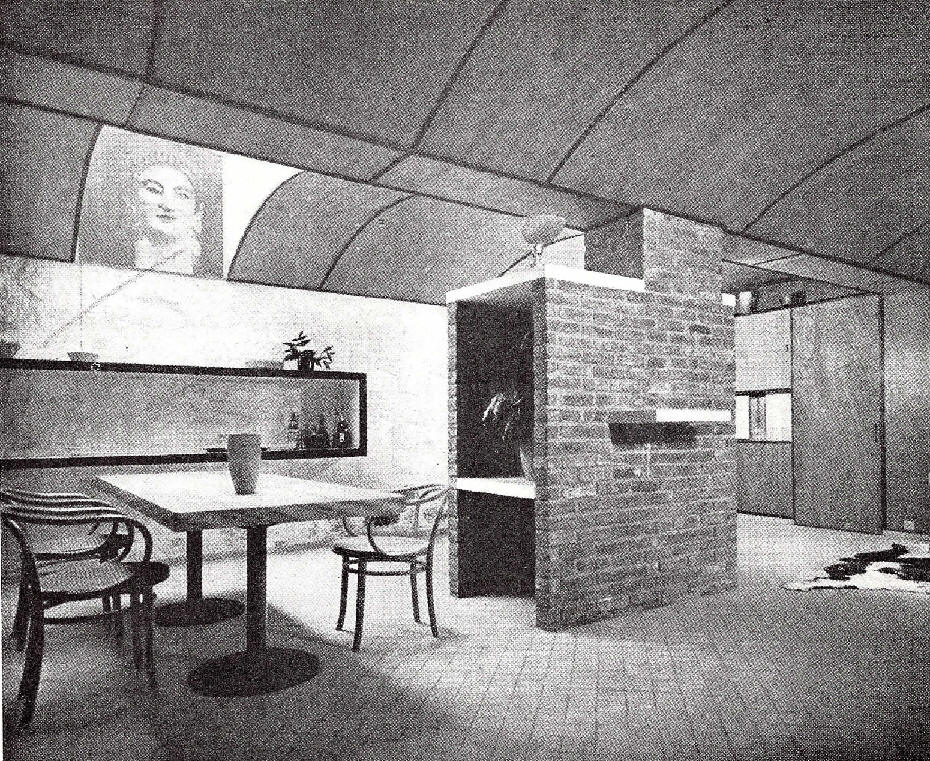
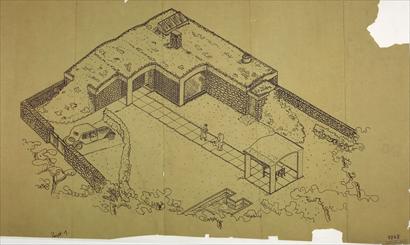
1935 - Villa Henfel, aka The Weekend House, 49 Avenue de Chesnay, La Celle-Saint-Cloud, France. Commissioned 1934. Significantly altered.
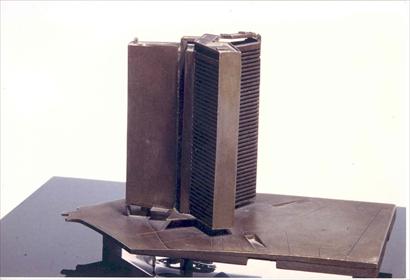
1935 - Apartment complex at the Kellerman Bastion, Paris, France. Unbuilt. Designed as a cooperative CIAM project.
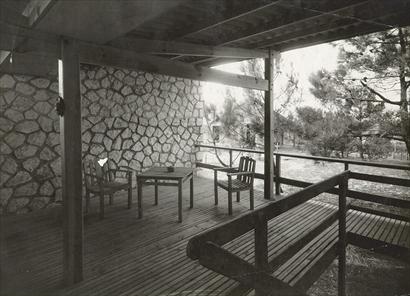
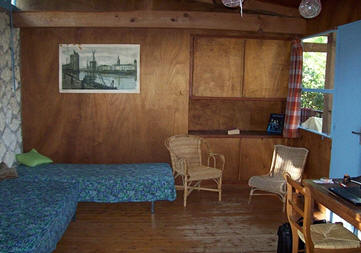
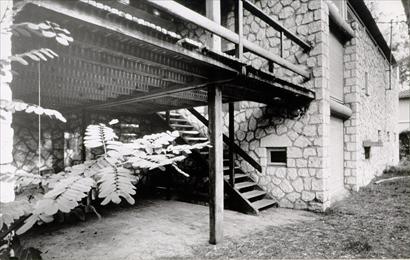
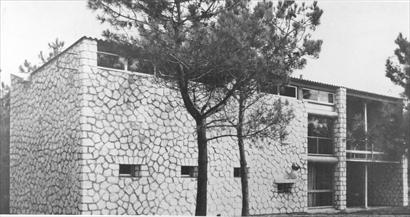
1935 - Villa Le Sextant, 17 Avenue de l'Océan, 17570 Les Mathes, France.
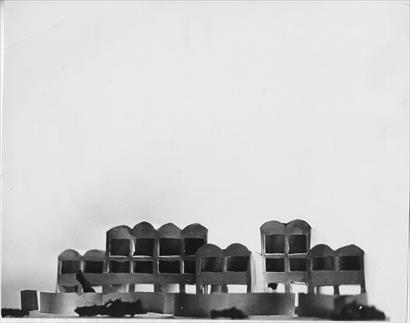
1948 - Vacation complex in Roquebrune-cap-Martin, France. Unbuilt.
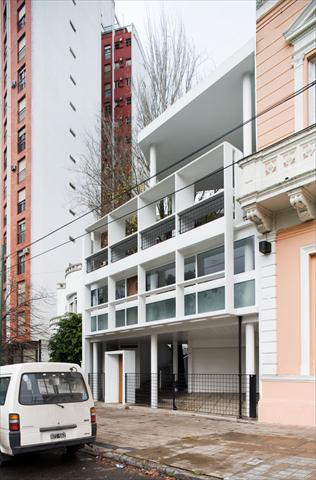
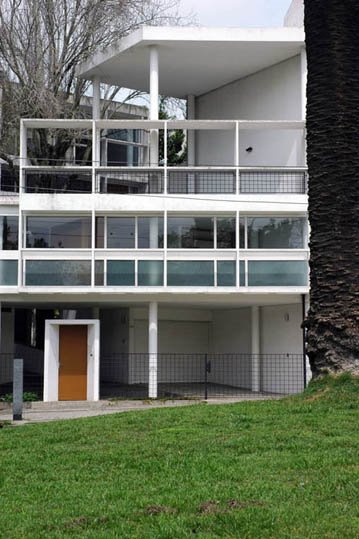
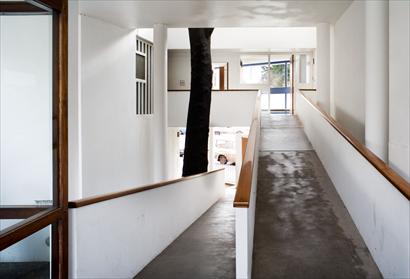
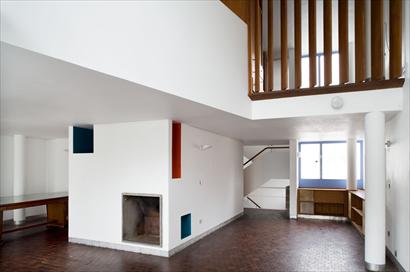
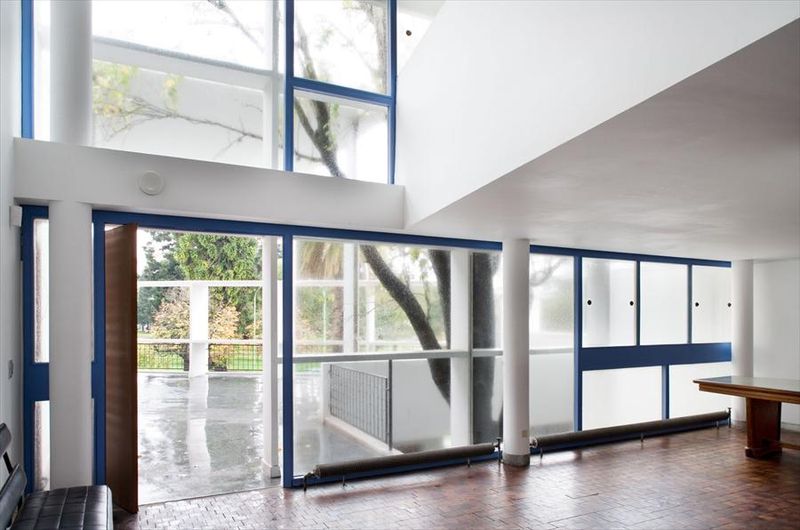
1949 - The Pedro Domingo Curutchet House, 320 Boulevard 53, Barrio el Bosque, La Plata, Argentina. Commissioned 1948. Included a small medical office on the first floor. Consists of four main levels with a courtyard between the house and the clinic. The building faces the Paseo del Bosque park. Corbusier never visited the site or met Curutchet. Construction began in 1949 under the supervision of local architect Amancio Williams and was completed in 1953. The house was restored from 1986 to 1988 during the centennial of Le Corbusier's birth and declared a national landmark by Argentina's Commission on National Landmarks. As of 2011, it houses the Buenos Aires professional association of architects, the Colegio de Arquitectos, and is open to the public for tours. Designated as a world heritage site.
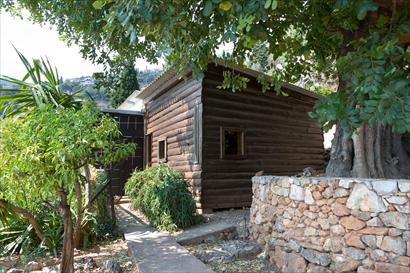
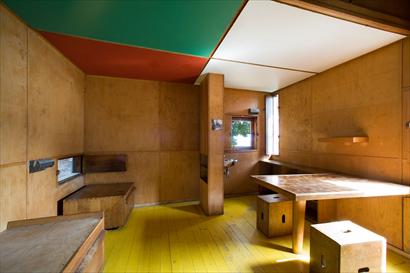
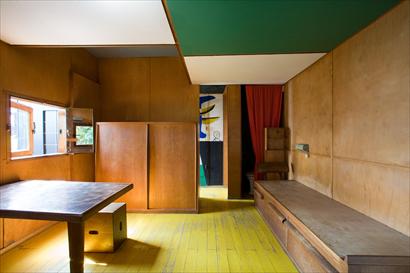
1952 - Le Corbusier's own cabanon (Cabin), on a path parallel to Sentier du Bard de mer, Plage du Buse, Roquebrune-Cap-Martin, France. Commisssioned 1950.
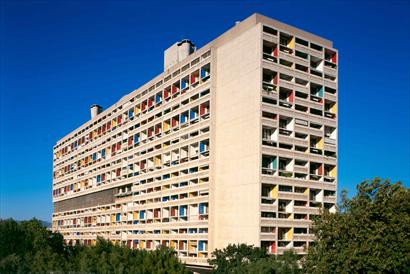
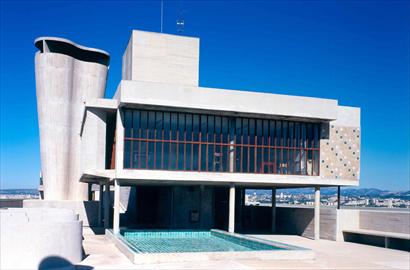
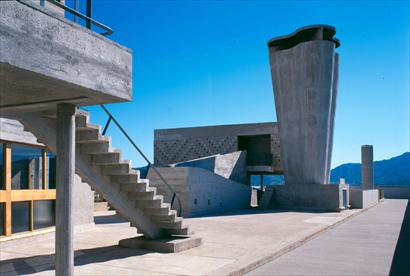
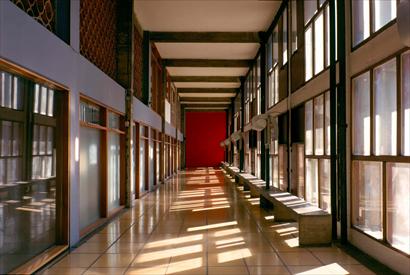
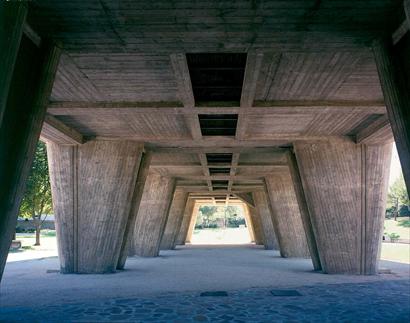
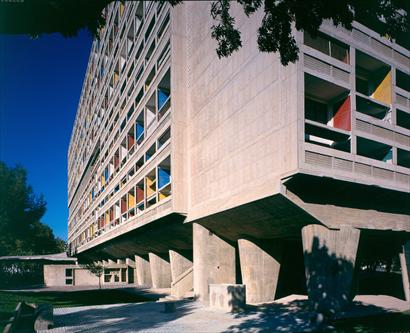
1952 - Unité d'Habitation (Housing Unit), aka Cité Radieuse (radiant city), aka La Maison du Fada (The House of the Mad), Marseille, France. Done in collaboration with painter-architect Nadir Afonso. The concept formed the basis of several housing developments led by Le Corbusier.
From Wikipedia: Developed with Corbusier's designers Shadrach Woods and George Candilis, it comprises 337 apartments arranged over twelve stories, all suspended on large piers. The building also incorporates shops with architectural bookshop, sporting, medical and educational facilities, a hotel which is open to the public, and a gastronomic restaurant, Le Ventre de l'Architecte ("The Architect's Belly"). The flat roof is designed as a communal terrace with sculptural ventilation stacks, a running track, and a shallow paddling pool for children. The roof, where a number of theatrical performances have taken place, underwent renovation in 2010. It has unobstructed views of the Mediterranean and Marseille.
Inside, corridors run through the centre of the long axis of every third floor of the building, with each apartment lying on two levels, and stretching from one side of the building to the other, with a balcony. Unlike many of the inferior system-built blocks it inspired, which lack the original's generous proportions, communal facilities and parkland setting, the Unité is popular with its residents and is now mainly occupied by upper middle-class professionals. As of 2011, it is pending designation as a World Heritage site by UNESCO. It was already designated a historic monument by the French Ministry of Culture.
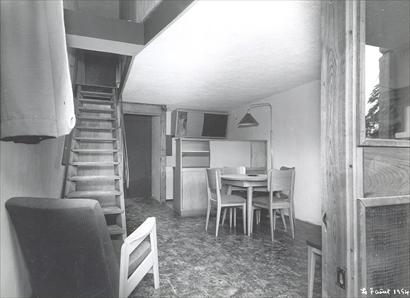
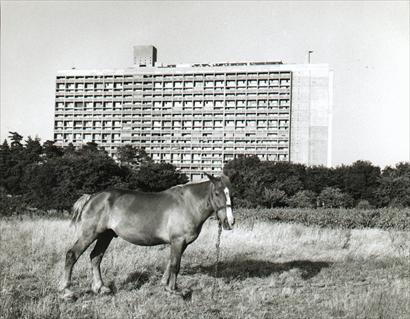
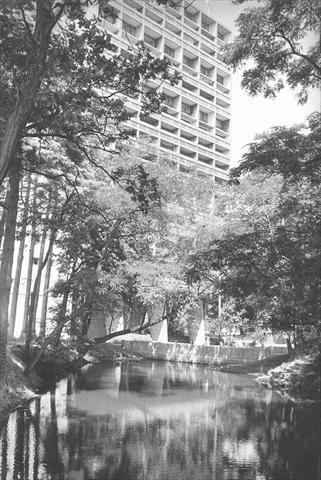
1955 - Unité d'Habitation of Nantes-Rezé, 52 Boulevard le Corbusier, Nantes, France. Commissioned 1948.
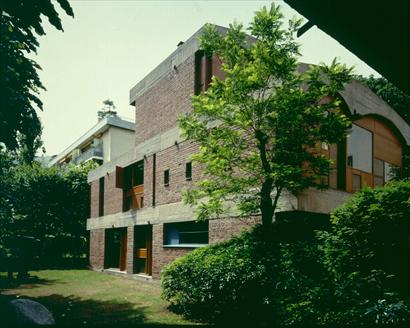
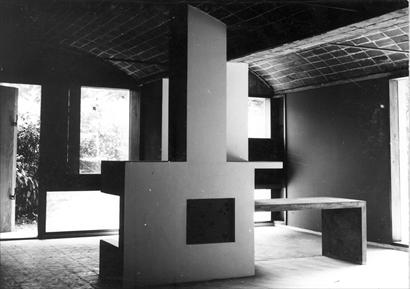
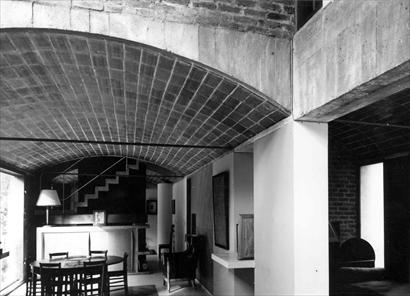
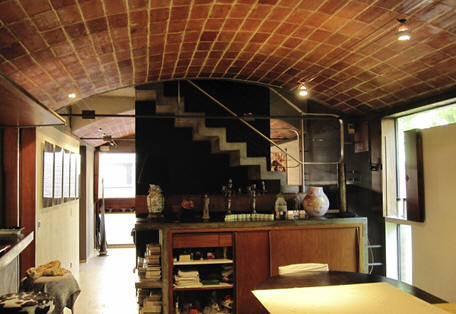
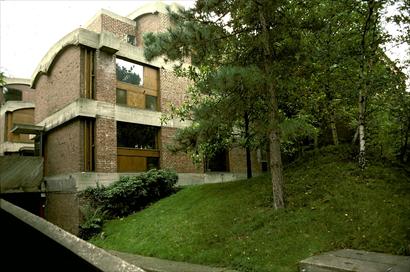
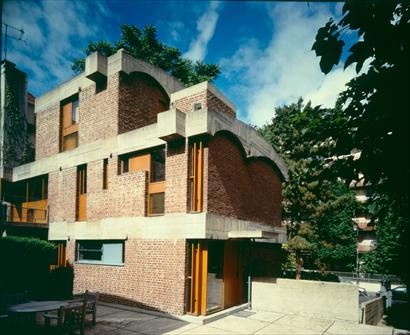
1956 - Maisons Jaoul, 83 Rue de Longchamp, Neuilly-sur-Seine, France. The two houses were drawn in 1937 but were built much later for André Jaoul and his son Michel. They were for a time owned by English millionaire Lord Palumbo, also former owner of Mies' Farnsworth House. They were sold belong to two sisters. The Maisons Jaoul have been protected by the French government as historical monuments since 1966, at the request of André Malraux.
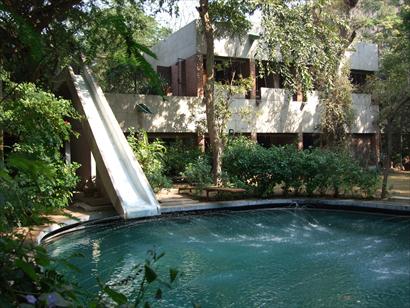
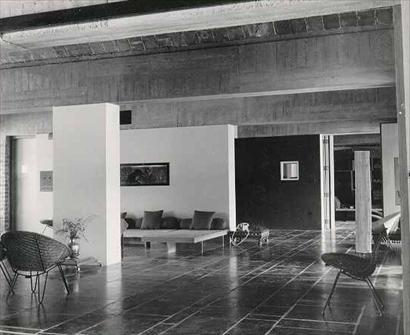
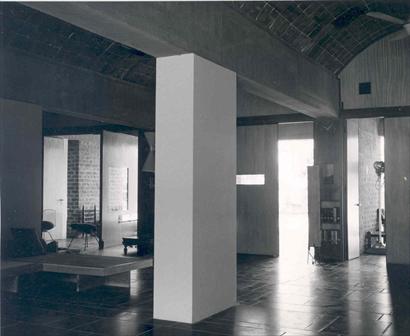
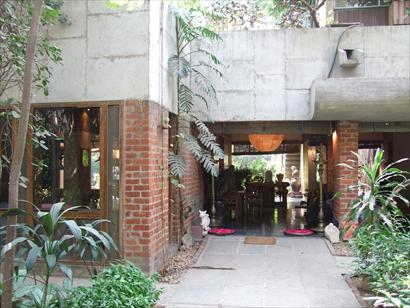
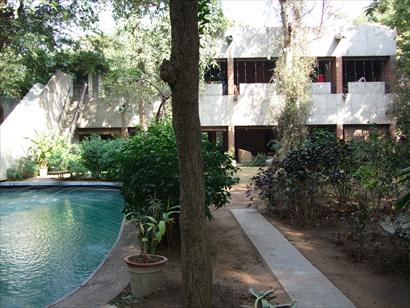
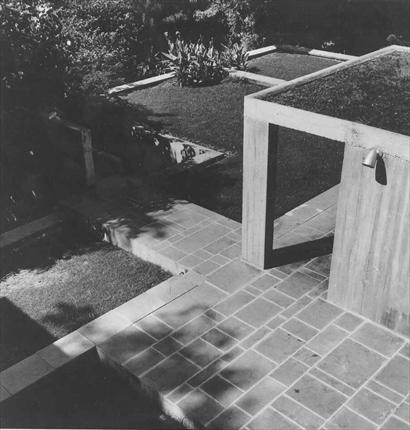
1956 - Villa Sarabhai, Shahibag, Ahmedabad, India. Commissioned 1951.
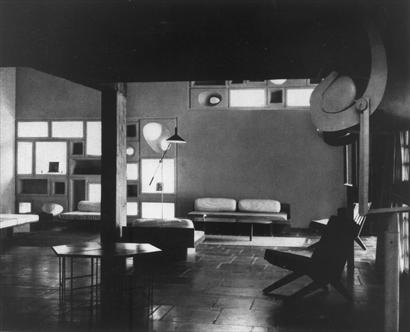
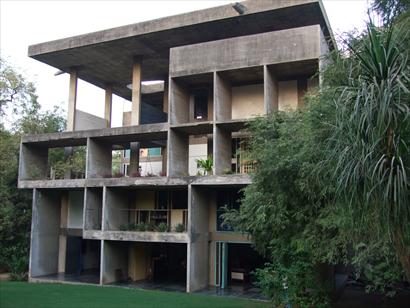
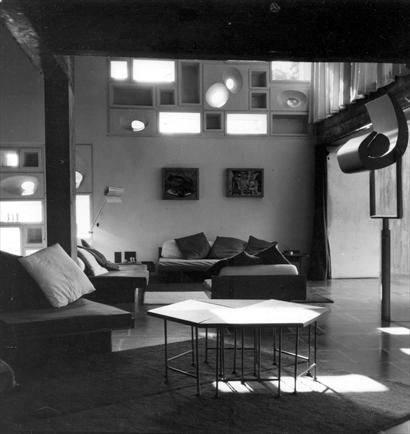
1956 - Villa Shodan, Kharawala Road, Ahmedabad, India. Commissioned 1951. Original client was Surottam Hutheesing. Later sold to Shyamu Shodhan.
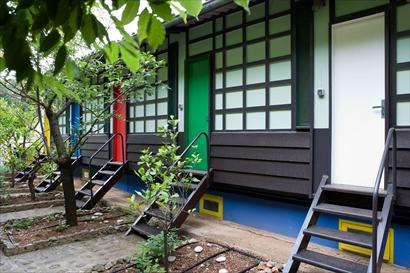
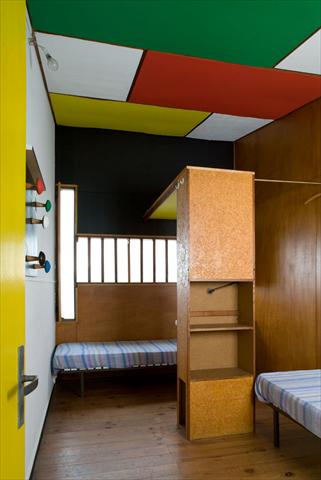
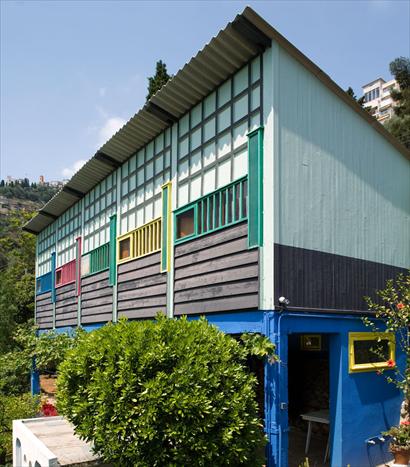
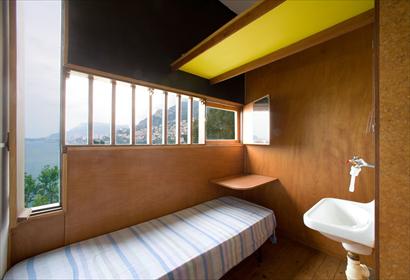
1956 - Unités de Camping, Roquebrune-Cap-Martin, France. Commissioned 1952. Five units.
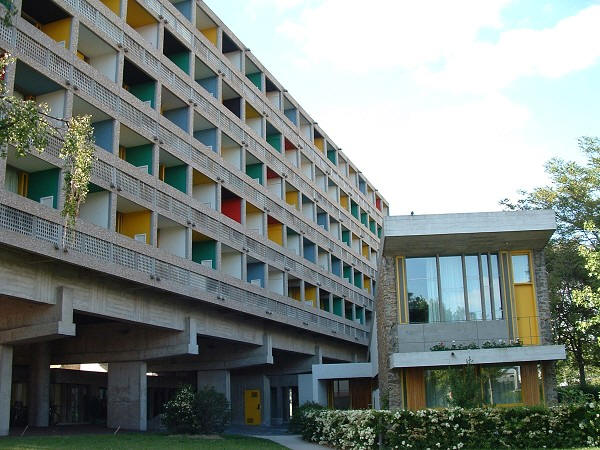
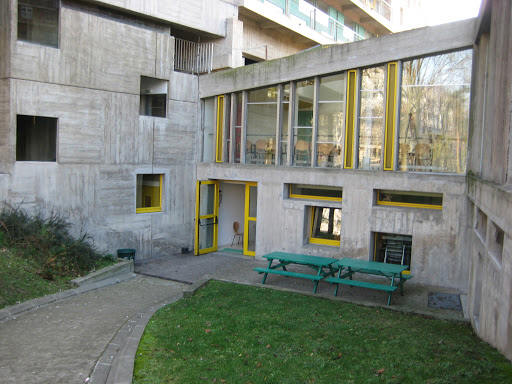
1957 - Maison du Brésil, Cité Universitaire, 4 avenue de la Porte, Gentilly, Paris, France.
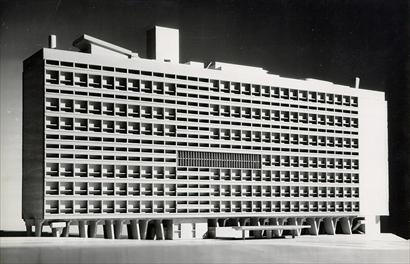
1957 - Unité d'Habitation of Meaux, France. Unbuilt.
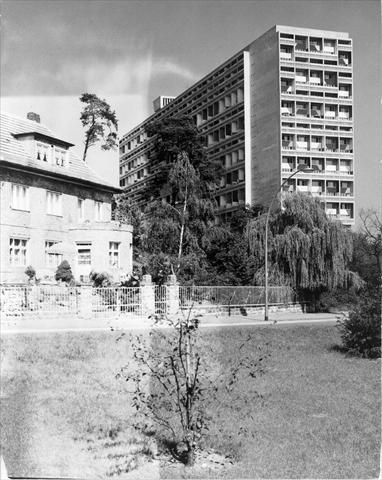
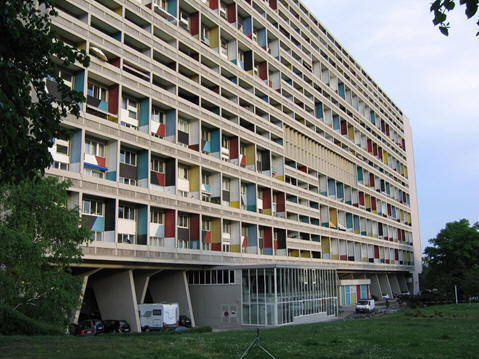
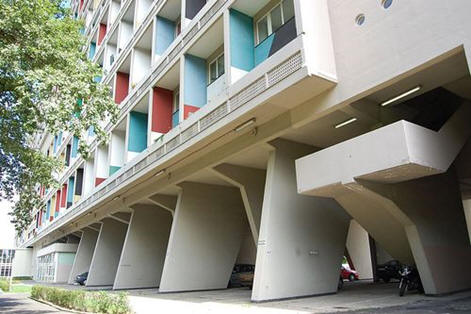
1958 - Unité d'Habitation of Berlin-Charlottenburg, Flatowallee 16, Berlin, Germany.
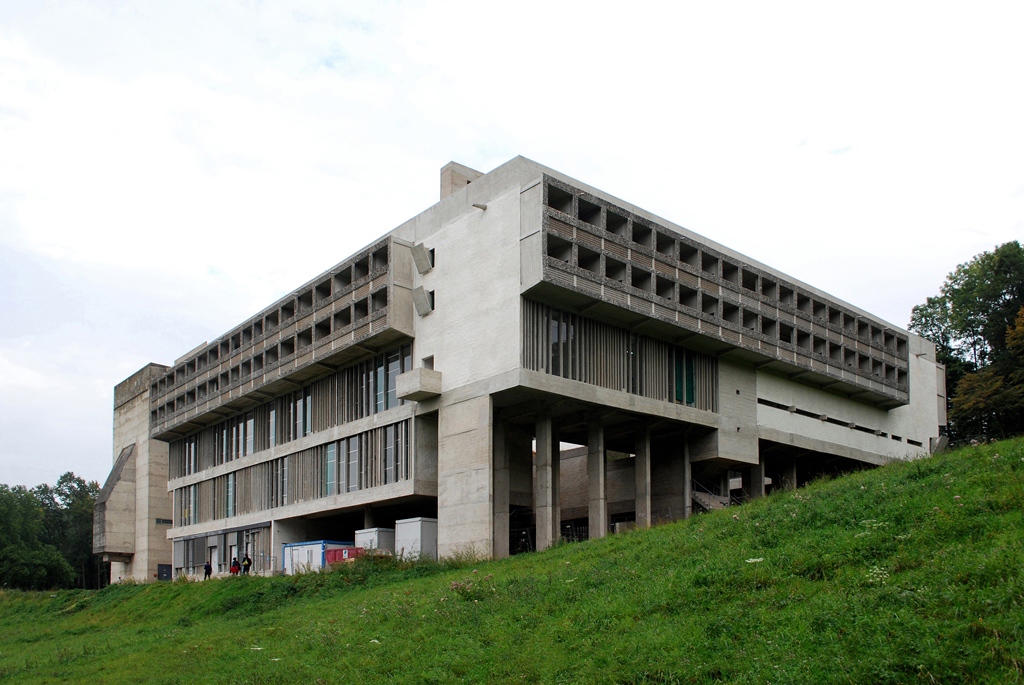
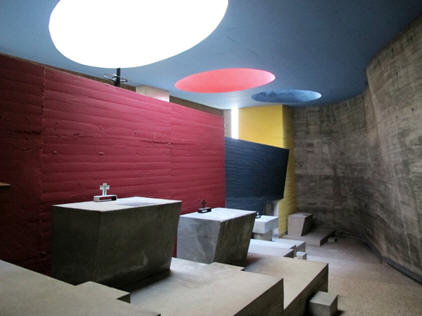
1960 - The Sainte Marie de La Tourette Monastery, Eveux-sur-l'Abresle, Rhone, near Lyon, France. Designed with Iannis Xenakis. Commissioned 1953. The Dominican monks wanted the monastery in a small valley at Éveux, near Lyon. The buildings contain a hundred bedrooms for teachers and students, study halls, a hall for work and one for recreation, a library and a refectory. There is also a church, where the monks worship, and the circulation, which connects all the parts.
Though still functioning for monks, La Tourette allows public overnight stays in the unused cells.
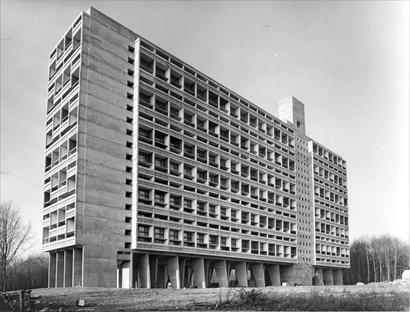
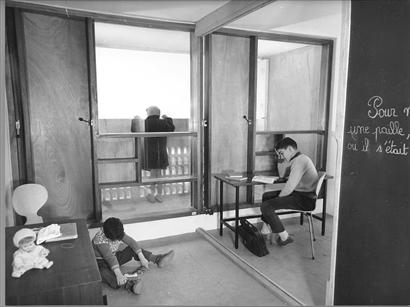
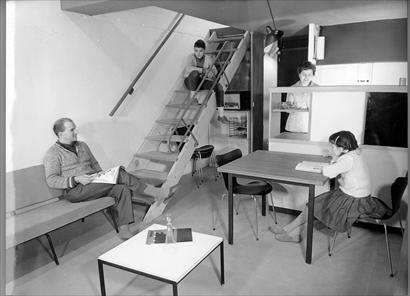
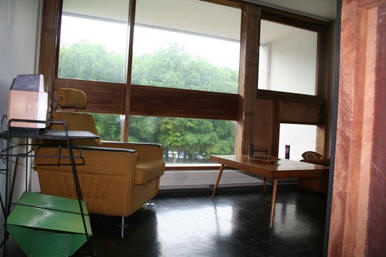
1961 - Unité d'Habitation, Briey en Forêt, France. Commissioned 1956.
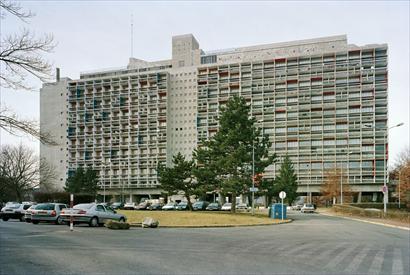
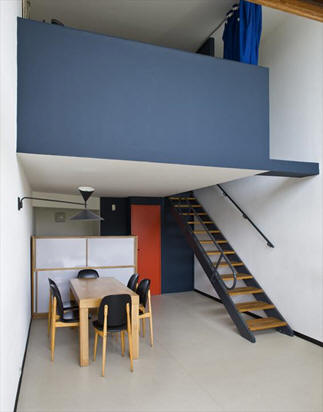
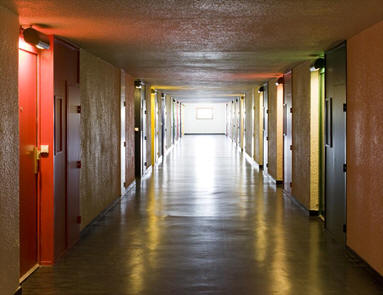
1967 - Unité d'Habitation of Firminy, Les Bruneaux, France. Commissioned 1957.
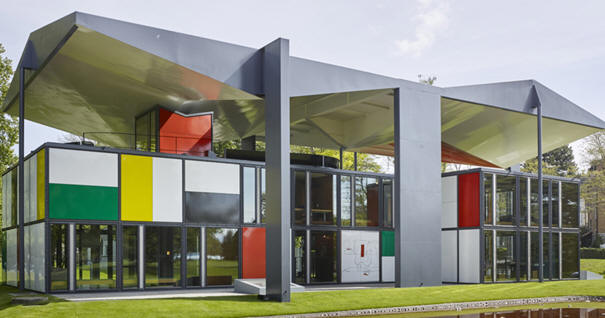
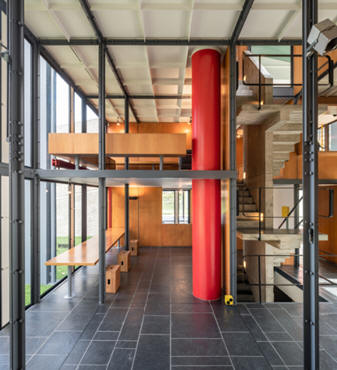
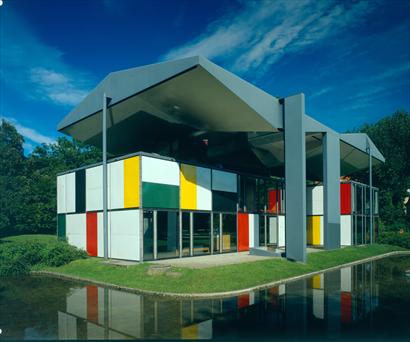
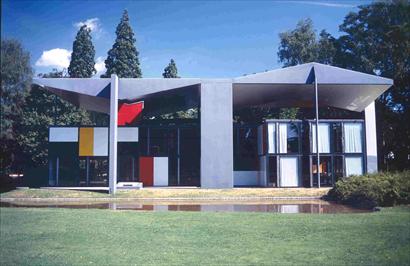
1967 - Pavillion Le Corbusier, aka Maison de l'Homme, aka the House of Man, Höschgasse 8, Zurich, Switzerland. Commissioned 1962. His last building, and his only building made of steel and glass.
Sources include: Wikipedia; Foundation Le Corbusier; Great Buildings Online; Modern Architecture: Critical History, by Kenneth Frampton.
